
Along with Stanford news and stories, show me:
- Student information
- Faculty/Staff information
We want to provide announcements, events, leadership messages and resources that are relevant to you. Your selection is stored in a browser cookie which you can remove at any time using “Clear all personalization” below.
Speaking, writing and reading are integral to everyday life, where language is the primary tool for expression and communication. Studying how people use language – what words and phrases they unconsciously choose and combine – can help us better understand ourselves and why we behave the way we do.
Linguistics scholars seek to determine what is unique and universal about the language we use, how it is acquired and the ways it changes over time. They consider language as a cultural, social and psychological phenomenon.
“Understanding why and how languages differ tells about the range of what is human,” said Dan Jurafsky , the Jackson Eli Reynolds Professor in Humanities and chair of the Department of Linguistics in the School of Humanities and Sciences at Stanford . “Discovering what’s universal about languages can help us understand the core of our humanity.”
The stories below represent some of the ways linguists have investigated many aspects of language, including its semantics and syntax, phonetics and phonology, and its social, psychological and computational aspects.
Understanding stereotypes
Stanford linguists and psychologists study how language is interpreted by people. Even the slightest differences in language use can correspond with biased beliefs of the speakers, according to research.
One study showed that a relatively harmless sentence, such as “girls are as good as boys at math,” can subtly perpetuate sexist stereotypes. Because of the statement’s grammatical structure, it implies that being good at math is more common or natural for boys than girls, the researchers said.
Language can play a big role in how we and others perceive the world, and linguists work to discover what words and phrases can influence us, unknowingly.
How well-meaning statements can spread stereotypes unintentionally
New Stanford research shows that sentences that frame one gender as the standard for the other can unintentionally perpetuate biases.
Algorithms reveal changes in stereotypes
New Stanford research shows that, over the past century, linguistic changes in gender and ethnic stereotypes correlated with major social movements and demographic changes in the U.S. Census data.
Exploring what an interruption is in conversation
Stanford doctoral candidate Katherine Hilton found that people perceive interruptions in conversation differently, and those perceptions differ depending on the listener’s own conversational style as well as gender.
Cops speak less respectfully to black community members
Professors Jennifer Eberhardt and Dan Jurafsky, along with other Stanford researchers, detected racial disparities in police officers’ speech after analyzing more than 100 hours of body camera footage from Oakland Police.
How other languages inform our own
People speak roughly 7,000 languages worldwide. Although there is a lot in common among languages, each one is unique, both in its structure and in the way it reflects the culture of the people who speak it.
Jurafsky said it’s important to study languages other than our own and how they develop over time because it can help scholars understand what lies at the foundation of humans’ unique way of communicating with one another.
“All this research can help us discover what it means to be human,” Jurafsky said.
Stanford PhD student documents indigenous language of Papua New Guinea
Fifth-year PhD student Kate Lindsey recently returned to the United States after a year of documenting an obscure language indigenous to the South Pacific nation.
Students explore Esperanto across Europe
In a research project spanning eight countries, two Stanford students search for Esperanto, a constructed language, against the backdrop of European populism.
Chris Manning: How computers are learning to understand language
A computer scientist discusses the evolution of computational linguistics and where it’s headed next.
Stanford research explores novel perspectives on the evolution of Spanish
Using digital tools and literature to explore the evolution of the Spanish language, Stanford researcher Cuauhtémoc García-García reveals a new historical perspective on linguistic changes in Latin America and Spain.
Language as a lens into behavior
Linguists analyze how certain speech patterns correspond to particular behaviors, including how language can impact people’s buying decisions or influence their social media use.
For example, in one research paper, a group of Stanford researchers examined the differences in how Republicans and Democrats express themselves online to better understand how a polarization of beliefs can occur on social media.
“We live in a very polarized time,” Jurafsky said. “Understanding what different groups of people say and why is the first step in determining how we can help bring people together.”
Analyzing the tweets of Republicans and Democrats
New research by Dora Demszky and colleagues examined how Republicans and Democrats express themselves online in an attempt to understand how polarization of beliefs occurs on social media.
Examining bilingual behavior of children at Texas preschool
A Stanford senior studied a group of bilingual children at a Spanish immersion preschool in Texas to understand how they distinguished between their two languages.
Predicting sales of online products from advertising language
Stanford linguist Dan Jurafsky and colleagues have found that products in Japan sell better if their advertising includes polite language and words that invoke cultural traditions or authority.
Language can help the elderly cope with the challenges of aging, says Stanford professor
By examining conversations of elderly Japanese women, linguist Yoshiko Matsumoto uncovers language techniques that help people move past traumatic events and regain a sense of normalcy.
Thank you for visiting nature.com. You are using a browser version with limited support for CSS. To obtain the best experience, we recommend you use a more up to date browser (or turn off compatibility mode in Internet Explorer). In the meantime, to ensure continued support, we are displaying the site without styles and JavaScript.
- View all journals
- Explore content
- About the journal
- Publish with us
- Sign up for alerts
- Perspective
- Published: 19 June 2024
Language is primarily a tool for communication rather than thought
- Evelina Fedorenko ORCID: orcid.org/0000-0003-3823-514X 1 , 2 ,
- Steven T. Piantadosi 3 &
- Edward A. F. Gibson 1
Nature volume 630 , pages 575–586 ( 2024 ) Cite this article
17k Accesses
889 Altmetric
Metrics details
- Human behaviour
Language is a defining characteristic of our species, but the function, or functions, that it serves has been debated for centuries. Here we bring recent evidence from neuroscience and allied disciplines to argue that in modern humans, language is a tool for communication, contrary to a prominent view that we use language for thinking. We begin by introducing the brain network that supports linguistic ability in humans. We then review evidence for a double dissociation between language and thought, and discuss several properties of language that suggest that it is optimized for communication. We conclude that although the emergence of language has unquestionably transformed human culture, language does not appear to be a prerequisite for complex thought, including symbolic thought. Instead, language is a powerful tool for the transmission of cultural knowledge; it plausibly co-evolved with our thinking and reasoning capacities, and only reflects, rather than gives rise to, the signature sophistication of human cognition.
This is a preview of subscription content, access via your institution
Access options
Access Nature and 54 other Nature Portfolio journals
Get Nature+, our best-value online-access subscription
24,99 € / 30 days
cancel any time
Subscribe to this journal
Receive 51 print issues and online access
185,98 € per year
only 3,65 € per issue
Buy this article
- Purchase on Springer Link
- Instant access to full article PDF
Prices may be subject to local taxes which are calculated during checkout
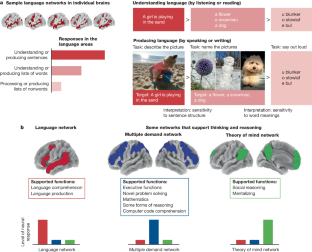
Similar content being viewed by others

The language network as a natural kind within the broader landscape of the human brain

An investigation across 45 languages and 12 language families reveals a universal language network
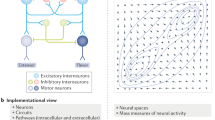
Two views on the cognitive brain
Barham, L. & Everett, D. Semiotics and the origin of language in the Lower Palaeolithic. J. Archaeol. Method Theory 28 , 535–579 (2021).
Article Google Scholar
Hockett, C. F. The origin of speech. Sci. Am. 203 , 88–97 (1960). A classic overview of the relationship between key features of human language and communication systems found in other species, with a focus on distinctive and shared properties .
Jackendoff, R. & Pinker, S. The faculty of language: what’s special about it? Cognition 95 , 201–236 (2005).
Article PubMed Google Scholar
Hurford, J. R. Language in the Light of Evolution: Volume 1, The Origins of Meaning (Oxford Univ. Press, 2007).
Kirby, S., Cornish, H. & Smith, K. Cumulative cultural evolution in the laboratory: an experimental approach to the origins of structure in human language. Proc. Natl Acad. Sci. USA 105 , 10681–10686 (2008). This behavioural investigation introduces an experimental paradigm based on iterated learning of artificial languages for studying the cultural evolution of language; the findings suggest that languages evolve to maximize their transmissibility by becoming easier to learn and more structured .
Article ADS CAS PubMed PubMed Central Google Scholar
Seyfarth, R. M. & Cheney, D. L. The Social Origins of Language (Princeton Univ. Press, 2018).
Gibson, E. et al. How efficiency shapes human language. Trends Cogn. Sci. 23 , 389–407 (2019).
Chomsky, N. The Minimalist Program (MIT Press, 1995).
Carruthers, P. The cognitive functions of language. Behav. Brain Sci. 25 , 657–674 (2002). This comprehensive review discusses diverse language-for-thought views and puts forward a specific proposal whereby language has a critical role in cross-domain integration .
Gentner, D. & Goldin-Meadow, S. Language in Mind: Advances in the Study of Language and Thought (MIT Press, 2003).
Majid, A., Bowerman, M., Kita, S., Haun, D. B. & Levinson, S. C. Can language restructure cognition? The case for space. Trends Cogn. Sci. 8 , 108–114 (2004).
Vygotsky, L. S. Thought and Language (MIT Press, 2012).
Lupyan, G. The centrality of language in human cognition. Lang. Learn. 66 , 516–553 (2016).
Davidson, D. in Mind and Language (ed. Guttenplan, S.) 1975–1977 (Oxford Univ. Press, 1975).
Dummett, M. Origins of Analytical Philosophy (Harvard Univ. Press, 1994).
Gleitman, L. & Papafragou, A. in The Cambridge Handbook of Thinking and Reasoning (eds Holyoak, K. J. & Morrison, R. G.) 633–661 (Cambridge Univ. Press, 2005).
de Villiers, J. in Understanding Other Minds: Perspectives from Developmental Cognitive Neuroscience (eds Baron-Cohen, S. et al.) 83–123 (Oxford Univ. Press, 2000).
Gentner, D. in Language in Mind: Advances in the Study of Language and Thought (eds Gentner, D. & Goldin-Meadow, S.) 3–14 (MIT Press, 2003). This position piece articulates one version of a language-for-thought hypothesis, whereby human intelligence is due to a combination of our analogical reasoning ability, possession of symbolic representations, and the ability of relational language to improve analogical reasoning abilities .
Buller, D. J. Adapting Minds: Evolutionary Psychology and the Persistent Quest for Human Nature (MIT Press, 2005).
Gould, S. J. & Vrba, E. S. Exaptation—a missing term in the science of form. Paleobiology 8 , 4–15 (1982).
Shannon, C. E. A mathematical theory of communication. Bell Syst. Tech. J. 27 , 379–423 (1948). This article introduces a formal framework for systems of information transfer, with core concepts such as channel capacity, and lays a foundation for the field of information theory .
Article MathSciNet Google Scholar
Goldberg, A. E. Constructions: A Construction Grammar Approach to Argument Structure (Univ. Chicago Press, 1995).
Jackendoff, R. Foundations of Language: Brain, Meaning, Grammar, Evolution (Oxford Univ. Press, 2002).
Geschwind, N. The organization of language and the brain: language disorders after brain damage help in elucidating the neural basis of verbal behavior. Science 170 , 940–944 (1970).
Article ADS CAS PubMed Google Scholar
Friederici, A. D. Towards a neural basis of auditory sentence processing. Trends Cogn. Sci. 6 , 78–84 (2002).
Bates, E. et al. Voxel-based lesion–symptom mapping. Nat. Neurosci. 6 , 448–450 (2003).
Article CAS PubMed Google Scholar
Hagoort, P. The neurobiology of language beyond single-word processing. Science 366 , 55–58 (2019).
Fedorenko, E., Ivanova, A. I. & Regev, T. I. The language network as a natural kind within the broader landscape of the human brain. Nat. Rev. Neurosci. 25 , 289–312 (2024).
Neville, H. J. et al. Cerebral organization for language in deaf and hearing subjects: biological constraints and effects of experience. Proc. Natl Acad. Sci. USA 95 , 922–929 (1998).
Fedorenko, E., Hsieh, P.-J., Nieto-Castañon, A., Whitfield-Gabrieli, S. & Kanwisher, N. A new method for fMRI investigations of language: defining ROIs functionally in individual subjects. J. Neurophysiol. 104 , 1177–1194 (2010).
Article PubMed PubMed Central Google Scholar
Vagharchakian, L., Dehaene-Lambertz, G., Pallier, C. & Dehaene, S. A temporal bottleneck in the language comprehension network. J. Neurosci. 32 , 9089–9102 (2012).
Article CAS PubMed PubMed Central Google Scholar
Regev, M., Honey, C. J., Simony, E. & Hasson, U. Selective and invariant neural responses to spoken and written narratives. J. Neurosci. 33 , 15978–15988 (2013).
Hu, J. et al. Precision fMRI reveals that the language-selective network supports both phrase-structure building and lexical access during language production. Cereb. Cortex 33 , 4384–4404 (2022).
Article PubMed Central Google Scholar
Menenti, L., Gierhan, S. M. E., Segaert, K. & Hagoort, P. Shared language: overlap and segregation of the neuronal infrastructure for speaking and listening revealed by functional MRI. Psychol. Sci. 22 , 1173–1182 (2011). This fMRI investigation establishes that language comprehension and language production draw on the same brain areas in the left frontal and temporal cortex .
Hauser, M. D., Chomsky, N. & Fitch, W. T. The faculty of language: what is it, who has it, and how did it evolve? Science 298 , 1569–1579 (2002).
Pallier, C., Devauchelle, A. D. & Dehaene, S. Cortical representation of the constituent structure of sentences. Proc. Natl Acad. Sci. USA 108 , 2522–2527 (2011).
Bozic, M., Fonteneau, E., Su, L. & Marslen‐Wilson, W. D. Grammatical analysis as a distributed neurobiological function. Hum. Brain Mapp. 36 , 1190–1201 (2015).
Rodd, J. M., Vitello, S., Woollams, A. M. & Adank, P. Localising semantic and syntactic processing in spoken and written language comprehension: an activation likelihood estimation meta-analysis. Brain Lang. 141 , 89–102 (2015).
Blank, I., Balewski, Z., Mahowald, K. & Fedorenko, E. Syntactic processing is distributed across the language system. NeuroImage 127 , 307–323 (2016).
Fedorenko, E. et al. Neural correlate of the construction of sentence meaning. Proc. Natl Acad. Sci. USA 113 , E6256–E6262 (2016).
Nelson, M. J. et al. Neurophysiological dynamics of phrase-structure building during sentence processing. Proc. Natl Acad. Sci. USA 114 , E3669–E3678 (2017).
Fedorenko, E., Blank, I. A., Siegelman, M. & Mineroff, Z. Lack of selectivity for syntax relative to word meanings throughout the language network. Cognition 203 , 104348 (2020). This fMRI investigation establishes that every part of the language network that is sensitive to syntactic structure building is also sensitive to word meanings and comprehensively reviews literature relevant to the syntax selectivity debate .
Giglio, L., Ostarek, M. O., Weber, K. & Hagoort, P. Commonalities and asymmetries in the neurobiological infrastructure for language production and comprehension. Cereb. Cortex 32 , 1405–1418 (2022).
Heilbron, M., Armeni, K., Schoffelen, J. M., Hagoort, P. & De Lange, F. P. A hierarchy of linguistic predictions during natural language comprehension. Proc. Natl Acad. Sci. USA 119 , e2201968119 (2022).
Shain, C., Blank, I. A., Fedorenko, E., Gibson, E. & Schuler, W. Robust effects of working memory demand during naturalistic language comprehension in language-selective cortex. J. Neurosci. 42 , 7412–7430 (2022).
Desbordes, T. et al. Dimensionality and ramping: signatures of sentence integration in the dynamics of brains and deep language models. J. Neurosci. 43 , 5350–5364 (2023).
Shain, C. et al. Distributed sensitivity to syntax and semantics throughout the language network. J. Cogn. Neurosci. 22 , 1–43 (2024). This fMRI investigation establishes distributed sensitivity to cognitive demands associated with lexical access, syntactic structure building and semantic composition across the language network.
Tuckute, G. et al. Driving and suppressing the human language network using large language models. Nat. Hum. Behav. 8 , 544–561 (2024).
Gentner, D. Structure-mapping: a theoretical framework for analogy. Cogn. Sci. 7 , 155–170 (1983).
Google Scholar
Duncan, J. How Intelligence Happens (Yale Univ. Press, 2012).
Varley, R. A., Klessinger, N. J., Romanowski, C. A. & Siegal, M. Agrammatic but numerate. Proc. Natl Acad. Sci. USA 102 , 3519–3524 (2005). Patients with acquired damage to the language network display aphasia and linguistic deficits (including severe grammatical difficulties) but perform at the level of neurotypical control participants on diverse numerical reasoning tasks .
Klessinger, N., Szczerbinski, M. & Varley, R. Algebra in a man with severe aphasia. Neuropsychologia 45 , 1642–1648 (2007).
Lecours, A. & Joanette, Y. Linguistic and other psychological aspects of paroxysmal aphasia. Brain and Language 10 , 1–23 (1980).
Kertesz, A. in Thought Without Language (ed. Weiskrantz, L.) 451–463 (Oxford Univ. Press, 1988).
Varley, R. & Siegal, M. Evidence for cognition without grammar from causal reasoning and ‘theory of mind’ in an agrammatic aphasic patient. Curr. Biol. 10 , 723–726 (2000).
Siegal, M., Varley, R. & Want, S. C. Mind over grammar: reasoning in aphasia and development. Trends Cogn. Sci. 5 , 296–301 (2001).
Varley, R. In Cognitive Bases of Science (eds Carruthers, P. et al.) 99–116 (Cambridge Univ. Press, 2002).
Woolgar, A., Duncan, J., Manes, F. & Fedorenko, E. Fluid intelligence is supported by the multiple-demand system not the language system. Nat. Hum. Behav. 2 , 200–204 (2018).
Dronkers, N. F., Ludy, C. A. & Redfern, B. B. Pragmatics in the absence of verbal language: descriptions of a severe aphasic and a language-deprived adult. J. Neurolinguistics 11 , 179–190 (1998).
Varley, R., Siegal, M. & Want, S. C. Severe impairment in grammar does not preclude theory of mind. Neurocase 7 , 489–493 (2001).
Apperly, I. A., Samson, D., Carroll, N., Hussain, S. & Humphreys, G. Intact first-and second-order false belief reasoning in a patient with severely impaired grammar. Soc. Neurosci. 1 , 334–348 (2006). A person with acquired damage to the language network and consequent aphasia exhibits linguistic deficits but performs at the level of neurotypical control participants on theory of mind tasks .
Willems, R. M., Benn, Y., Hagoort, P., Toni, I. & Varley, R. Communicating without a functioning language system: Implications for the role of language in mentalizing. Neuropsychologia 49 , 3130–3135 (2011).
Bek, J., Blades, M., Siegal, M. & Varley, R. Language and spatial reorientation: evidence from severe aphasia. J. Exp. Psychol. 36 , 646 (2010).
Caramazza, A., Berndt, R. S. & Brownell, H. H. The semantic deficit hypothesis: Perceptual parsing and object classification by aphasic patients. B. Lang. 15 , 161–189 (1982).
Article CAS Google Scholar
Chertkow, H., Bub, D., Deaudon, C. & Whitehead, V. On the status of object concepts in aphasia. Brain Lang. 58 , 203–232 (1997).
Saygın, A. P., Wilson, S. M., Dronkers, N. F. & Bates, E. Action comprehension in aphasia: linguistic and non-linguistic deficits and their lesion correlates. Neuropsychologia 42 , 1788–1804 (2004).
Jefferies, E. & Lambon Ralph, M. A. Semantic impairment in stroke aphasia versus semantic dementia: a case-series comparison. Brain 129 , 2132–2147 (2006).
Dickey, M. W. & Warren, T. The influence of event-related knowledge on verb-argument processing in aphasia. Neuropsychologia 67 , 63–81 (2015).
Ivanova, A. A. et al. The language network is recruited but not required for nonverbal event semantics. Neurobiol. Lang. 2 , 176–201 (2021). In this fMRI study, semantic processing of event pictures in neurotypical individuals engages the language network, but less than verbal descriptions of the same events; however, individuals with acquired damage to the language network and consequent aphasia perform at the level of neurotypical control participants on a non-verbal semantic task .
Benn, Y. et al. The language network is not engaged in object categorization. Cereb. Cortex 33 , 10380–10400 (2023).
Varley, R. Reason without much language. Lang. Sci. 46 , 232–244 (2014).
Dehaene, S., Spelke, E., Pinel, P., Stanescu, R. & Tsivkin, S. Sources of mathematical thinking: behavioral and brain-imaging evidence. Science 284 , 970–974 (1999).
Hermer, L. & Spelke, E. Modularity and development: the case of spatial reorientation. Cognition 61 , 195–232 (1996).
Lupyan, G. Extracommunicative functions of language: verbal interference causes selective categorization impairments. Psychon. Bull. Rev. 16 , 711–718 (2009).
Braga, R. M., DiNicola, L. M., Becker, H. C. & Buckner, R. L. Situating the left-lateralized language network in the broader organization of multiple specialized large-scale distributed networks. J. Neurophysiol. 124 , 1415–1448 (2020). This fMRI investigation of the language network establishes this network as one of the intrinsic large-scale networks in the human brain, distinct from nearby cognitive networks .
Fedorenko, E. & Blank, I. A. Broca’s area is not a natural kind. Trends Cogn. Sci. 24 , 270–284 (2020).
Fedorenko, E., Behr, M. K. & Kanwisher, N. Functional specificity for high-level linguistic processing in the human brain. Proc. Natl Acad. Sci. USA 108 , 16428–16433 (2011). This fMRI investigation finds that arithmetic addition, demanding executive function tasks and music processing do not engage the language areas, thus establishing their selectivity for linguistic input over non-linguistic inputs and tasks .
Monti, M. M., Parsons, L. M. & Osherson, D. N. Thought beyond language: neural dissociation of algebra and natural language. Psychol. Sci. 23 , 914–922 (2012).
Amalric, M. & Dehaene, S. A distinct cortical network for mathematical knowledge in the human brain. NeuroImage 189 , 19–31 (2019).
Monti, M. M., Osherson, D. N., Martinez, M. J. & Parsons, L. M. Functional neuroanatomy of deductive inference: a language-independent distributed network. NeuroImage 37 , 1005–1016 (2007).
Monti, M. M., Parsons, L. M. & Osherson, D. N. The boundaries of language and thought in deductive inference. Proc. Natl Acad. Sci. USA 106 , 12554–12559 (2009). This fMRI investigation finds largely non-overlapping activations of brain regions to language processing and logical processing, thus establishing the selectivity of language areas for linguistic input over logic statements .
Ivanova, A. A. et al. Comprehension of computer code relies primarily on domain-general executive brain regions. eLife 9 , e58906 (2020).
Liu, Y. F., Kim, J., Wilson, C. & Bedny, M. Computer code comprehension shares neural resources with formal logical inference in the fronto-parietal network. eLife 9 , e59340 (2020).
Paunov, A. M., Blank, I. A. & Fedorenko, E. Functionally distinct language and theory of mind networks are synchronized at rest and during language comprehension. J. Neurophysiol. 121 , 1244–1265 (2019).
Paunov, A. M. et al. Differential tracking of linguistic vs. mental state content in naturalistic stimuli by language and theory of mind (ToM) brain networks. Neurobiol. Lang. 3 , 413–440 (2022).
Shain, C., Paunov, A., Chen, X., Lipkin, B. & Fedorenko, E. No evidence of theory of mind reasoning in the human language network. Cereb. Cortex 33 , 6299–6319 (2023).
Sueoka, Y., Paunov, A., Ivanova, A., Blank, I. A. & Fedorenko, E. The language network reliably “tracks” naturalistic meaningful non-verbal stimuli. Neurobiol. Lang. https://doi.org/10.1162/nol_a_00135 (2024).
Piaget, J. The Language and Thought of the Child (Harcourt Brace, 1926).
Gentner, D. & Loewenstein, J. in Language, Literacy, and Cognitive Development: The Development and Consequences of Symbolic Communication (eds Amsel, E. & Byrnes, J. P.) 89–126 (Lawrence Erlbaum Associates, 2002).
Appleton, M. & Reddy, V. Teaching three year‐olds to pass false belief tests: a conversational approach. Soc. Dev. 5 , 275–291 (1996).
Slaughter, V. & Gopnik, A. Conceptual coherence in the child’s theory of mind: training children to understand belief. Child Dev. 67 , 2967–2988 (1996).
Hiersche, K. J., Schettini, E., Li, J. & Saygin, Z. M. (2022). Functional dissociation of the language network and other cognition in early childhood. Preprint at bioRxiv https://doi.org/10.1101/2022.08.11.503597 (2023).
Hiersche, K. J. Functional Organization and Modularity of the Superior Temporal Lobe in Children . Masters thesis, The Ohio State University (2023).
Hall, W. C. What you don’t know can hurt you: the risk of language deprivation by impairing sign language development in deaf children. Matern. Child Health J. 21 , 961–965 (2017).
Hall, M. L., Hall, W. C. & Caselli, N. K. Deaf children need language, not (just) speech. First Lang. 39 , 367–395 (2019).
Bedny, M. & Saxe, R. Insights into the origins of knowledge from the cognitive neuroscience of blindness. Cogn. Neuropsychol. 29 , 56–84 (2012).
Grand, G., Blank, I. A., Pereira, F. & Fedorenko, E. Semantic projection recovers rich human knowledge of multiple object features from word embeddings. Nat. Hum. Behav. 6 , 975–987 (2022).
Jackendoff, R. How language helps us think. Pragmat. Cogn. 4 , 1–34 (1996).
Jackendoff. R. The User’s Guide to Meaning (MIT Press, 2012).
Curtiss, S. Genie: A Psycholinguistic Study of a Modern-day Wild Child (Academic Press, 1977).
Peterson, C. C. & Siegal, M. Representing inner worlds: theory of mind in autistic, deaf, and normal hearing children. Psychol. Sci. 10 , 126–129 (1999).
Richardson, H. et al. Reduced neural selectivity for mental states in deaf children with delayed exposure to sign language. Nat. Commun. 11 , 3246 (2020).
Spelke, E. S. What Babies Know: Core Knowledge and Composition , Vol. 1 (Oxford Univ. Press, 2022).
Cheney, D. L. & Seyfarth, R. M. How Monkeys See the World: Inside the Mind of Another Species (Univ. Chicago Press, 1990).
Herrmann, E., Call, J., Hernández-Lloreda, M. V., Hare, B. & Tomasello, M. Humans have evolved specialized skills of social cognition: the cultural intelligence hypothesis. Science 317 , 1360–1366 (2007).
Tomasello, M. & Herrmann, E. Ape and human cognition: what’s the difference? Curr. Dir. Psychol. Sci. 19 , 3–8 (2010).
Fischer, J. Monkeytalk: Inside the Worlds and Minds of Primates (Univ. Chicago Press, 2017).
Krupenye, C. & Call, J. Theory of mind in animals: current and future directions. Wiley Interdiscip. Rev. Cogn. Sci. 10 , e1503 (2019).
Shimizu, T. Why can birds be so smart? Background, significance, and implications of the revised view of the avian brain. Comparat. Cogn. Behav. Rev. 4 , 103–115 (2009).
Güntürkün, O. & Bugnyar, T. Cognition without cortex. Trends Cogn. Sci. 20 , 291–303 (2016).
Hart, B. L., Hart, L. A. & Pinter-Wollman, N. Large brains and cognition: where do elephants fit in? Neurosci. Biobehav. Rev. 32 , 86–98 (2008).
Godfrey-Smith, P. Other Minds: The Octopus and the Evolution of Intelligent Life (William Collins, 2016).
Schnell, A. K., Amodio, P., Boeckle, M. & Clayton, N. S. How intelligent is a cephalopod? Lessons from comparative cognition. Biol. Rev. 96 , 162–178 (2021).
Gallistel, C. R. Prelinguistic thought. Lang. Learn. Dev. 7 , 253–262 (2011).
Fitch, W. T. Animal cognition and the evolution of human language: why we cannot focus solely on communication. Philos. Trans. R. Soc. B 375 , 20190046 (2020).
Yamada, J. E. & Marshall, J. C. Laura: A Case Study for the Modularity of Language (MIT Press, 1990).
Rondal, J. A. Exceptional Language Development in Down Syndrome (Cambridge Univ. Press, 1995).
Bellugi, U., Lichtenberger, L., Jones, W., Lai, Z. & St George, M. The neurocognitive profile of Williams syndrome: a complex pattern of strengths and weaknesses. J. Cogn. Neurosci. 12 , 7–29 (2000).
Little, B. et al. Language in schizophrenia and aphasia: the relationship with non-verbal cognition and thought disorder. Cogn. Neuropsychiatry 24 , 389–405 (2019).
Mahowald, K. et al. Dissociating language and thought in large language models. Trends Cogn. Sci. 28 , 517–540(2024).
Chomsky, N., Belleti, A. & Rizzi, L. in On Nature and Language (eds Belleti, A. & Rizzi, L.) 92–161 (Cambridge Univ. Press, 2002).
Schwartz, J. L., Boë, L. J., Vallée, N. & Abry, C. The dispersion–focalization theory of vowel systems. J. Phonetics 25 , 255–286 (1997).
Diehl, R. L. Acoustic and auditory phonetics: the adaptive design of speech sound systems. Philos. Trans. R. Soc. B 363 , 965–978 (2008).
Everett, C., Blasi, D. E. & Roberts, S. G. Climate, vocal folds, and tonal languages: Connecting the physiological and geographic dots. Proc. Natl Acad. Sci. USA 112 , 1322–1327 (2015).
Blasi, D. E. et al. Human sound systems are shaped by post-Neolithic changes in bite configuration. Science 363 , eaav3218 (2019).
Dautriche, I., Mahowald, K., Gibson, E., Christophe, A. & Piantadosi, S. T. Words cluster phonetically beyond phonotactic regularities. Cognition 163 , 128–145 (2017).
Piantadosi, S. T., Tily, H. & Gibson, E. Word lengths are optimized for efficient communication. Proc. Natl Acad. Sci. USA 108 , 3526–3529 (2011).
Levelt, W. J. Speaking: From Intention to Articulation (MIT Press, 1993).
Kemp, C. & Regier, T. Kinship categories across languages reflect general communicative principles. Science 336 , 1049–1054 (2012). This study provides a computational demonstration that the kinship systems across world’s languages trade off between simplicity and informativeness in a near-optimal way, and argue that these principles also characterize other category systems .
Gibson, E. et al. Color naming across languages reflects color use. Proc. Natl Acad. Sci. USA 114 , 10785–10790 (2017).
Zaslavsky, N., Kemp, C., Regier, T. & Tishby, N. Efficient compression in color naming and its evolution. Proc. Natl Acad. Sci. USA 115 , 7937–7942 (2018).
Kemp, C., Gaby, A. & Regier, T. Season naming and the local environment. Proc. 41st Annual Meeting of the Cognitive Science Society 539–545 (2019).
Xu, Y., Liu, E. & Regier, T. Numeral systems across languages support efficient communication: From approximate numerosity to recursion. Open Mind 4 , 57–70 (2020).
Denić, M., Steinert-Threlkeld, S. & Szymanik, J. Complexity/informativeness trade-off in the domain of indefinite pronouns. Semant. Linguist. Theor. 30 , 166–184 (2021).
Mollica, F. et al. The forms and meanings of grammatical markers support efficient communication. Proc. Natl Acad. Sci. USA 118 , e2025993118 (2021).
van de Pol, I., Lodder, P., van Maanen, L., Steinert-Threlkeld, S. & Szymanik, J. Quantifiers satisfying semantic universals have shorter minimal description length. Cognition 232 , 105150 (2023).
Clark, H. H. in Context in Language Learning and Language Understanding (eds Malmkj’r, K. & Williams, J.) 63–87) (Cambridge Univ. Press, 1998).
Winter, B., Perlman, M. & Majid, A. Vision dominates in perceptual language: English sensory vocabulary is optimized for usage. Cognition 179 , 213–220 (2018).
von Humboldt, W. Uber die Verschiedenheit des Menschlichen Sprachbaues (1836).
Hurford, J. R. Linguistic Evolution Through Language Acquisition: Formal and Computational Models (ed. Briscoe, E.) 301–344 (Cambridge Univ. Press, 2002).
Smith, K., Brighton, H. & Kirby, S. Complex systems in language evolution: the cultural emergence of compositional structure. Adv. Complex Syst. 6 , 537–558 (2003).
Piantadosi, S. T. & Fedorenko, E. Infinitely productive language can arise from chance under communicative pressure. J. Lang. Evol. 2 , 141–147 (2017).
Gibson, E. Linguistic complexity: locality of syntactic dependencies. Cognition 68 , 1–76 (1998).
Lewis, R. L., Vasishth, S. & Van Dyke, J. A. Computational principles of working memory in sentence comprehension. Trends Cogn. Sci. 10 , 447–454 (2006).
Liu, H. Dependency distance as a metric of language comprehension difficulty. J. Cogn. Sci. 9 , 151–191 (2008).
ADS CAS Google Scholar
Futrell, R., Mahowald, K. & Gibson, E. Large-scale evidence of dependency length minimization in 37 languages. Proc. Natl Acad. Sci. USA 112 , 10336–10341 (2015). This investigation of syntactic dependency lengths across 37 diverse languages suggests that dependencies are predominantly local cross-linguistically, presumably because non-local dependencies are cognitively costly in both production and comprehension .
Dryer, M. S. The Greenbergian word order correlations. Language 68 , 81–138 (1992).
Hahn, M., Jurafsky, D. & Futrell, R. Universals of word order reflect optimization of grammars for efficient communication. Proc. Natl Acad. Sci. USA 117 , 2347–2353 (2020).
Goldin-Meadow, S., Wing, C. S., Özyürek, A. & Mylander, C. The natural order of events: how speakers of different languages represent events nonverbally. Proc. Natl Acad. Sci. USA 105 , 9163–9168 (2008).
Senghas, A., Kita, S. & Ozyürek, A. Children creating core properties of language: evidence from an emerging sign language in Nicaragua. Science 305 , 1779–1782 (2004).
Sandler, W., Meir, I., Padden, C. & Aronoff, M. The emergence of grammar: systematic structure in a new language. Proc. Natl Acad. Sci. USA 102 , 2661–2665 (2005).
Gibson, E. et al. A noisy-channel account of crosslinguistic word-order variation. Psychol. Sci. 24 , 1079–1088 (2013).
Levy, R. A noisy-channel model of human sentence comprehension under uncertain input. In Proc. Conference on Empirical Methods in Natural Language Processing 234–243 (2008).
Gibson, E., Bergen, L. & Piantadosi, S. T. Rational integration of noisy evidence and prior semantic expectations in sentence interpretation. Proc. Natl Acad. Sci. USA 110 , 8051–8056 (2013). This behavioural investigation demonstrates that language comprehension is robust to noise: in the presence of corrupt linguistic input, listeners and readers rely on a combination of prior expectations about messages that are likely to be communicated and knowledge of how linguistic signals can get corrupted by noise .
Futrell, R., Levy, R. P. & Gibson, E. Dependency locality as an explanatory principle for word order. Language 96 , 371–412 (2020).
Hahn, M. & Xu, Y. Crosslinguistic word order variation reflects evolutionary pressures of dependency and information locality. Proc. Natl Acad. Sci. USA 119 , e2122604119 (2022).
Hahn, M., Futrell, R., Levy, R. & Gibson, E. A resource-rational model of human processing of recursive linguistic structure. Proc. Natl Acad. Sci. USA 119 , e2122602119 (2022).
Piantadosi, S. T., Tily, H. & Gibson, E. The communicative function of ambiguity in language. Cognition 122 , 280–291 (2012).
Quijada, J. A grammar of the Ithkuil language—introduction. ithkuil.net https://ithkuil.net/00_intro.html (accessed 27 February 2022).
Srinivasan, M. & Rabagliati, H. The implications of polysemy for theories of word learning. Child Dev. Perspect. 15 , 148–153 (2021).
Bizzi, E. Motor control revisited: a novel view. Curr. Trends Neurol. 10 , 75–80 (2016).
Darwin, C. On the Origin of Species–A Facsimile of the First Edition (Harvard Univ. Press, 1964).
Herculano-Houzel, S. The remarkable, yet not extraordinary, human brain as a scaled-up primate brain and its associated cost. Proc. Natl Acad. Sci. USA 109 , 10661–10668 (2012).
White, L. T. The historical roots of our ecologic crisis. Science 155 , 1203–1207 (1967).
Article ADS PubMed Google Scholar
King, M. C. & Wilson, A. C. Evolution at two levels in humans and chimpanzees. Science 188 , 107–116 (1975).
Chimpanzee Sequencing and Analysis Consortium. Initial sequence of the chimpanzee genome and comparison with the human genome. Nature 437 , 69–87 (2005).
Buckner, R. L. & Krienen, F. M. The evolution of distributed association networks in the human brain. Trends Cogn. Sci. 17 , 648–665 (2013). This review presents the evidence for the disproportionate expansion of the association cortex relative to other brain areas in humans .
Duncan, J., Assem, M. & Shashidhara, S. Integrated intelligence from distributed brain activity. Trends Cogn. Sci. 24 , 838–852 (2020).
Saxe, R. & Kanwisher, N. People thinking about thinking people: the role of the temporo-parietal junction in “theory of mind”. NeuroImage 19 , 1835–1842 (2003).
Buckner, R. L. & DiNicola, L. M. The brain’s default network: updated anatomy, physiology and evolving insights. Nat. Rev. Neurosci. 20 , 593–608 (2019).
Deen, B. & Freiwald, W. A. Parallel systems for social and spatial reasoning within the cortical apex. Preprint at bioRxiv https://doi.org/10.1101/2021.09.23.461550 (2021).
Mitchell, D. J. et al. A putative multiple-demand system in the macaque brain. J. Neurosci. 36 , 8574–8585 (2016).
Cantlon, J. & Piantadosi, S. Uniquely human intelligence arose from expanded information capacity. Nat. Rev. Psychol. 3 , 275–293 (2024).
Tomasello, M. The Cultural Origins of Human Cognition (Harvard Univ. Press, 2009).
Boyd, R., Richerson, P. J. & Henrich, J. The cultural niche: Why social learning is essential for human adaptation. Proc. Natl Acad. Sci. USA 108 , 10918–10925 (2011).
Henrich, J. The Secret of Our Success: How Culture is Driving Human Evolution, Domesticating Our Species, and Making Us Smarter (Princeton Univ. Press, 2016).
Heyes, C. Cognitive Gadgets (Harvard Univ. Press, 2018).
Gumperz, J. J. & Levinson, S. C. (eds). Rethinking Linguistic Relativity (Cambridge Univ. Press, 1996).
Piaget, J. Language and Thought of the Child: Selected Works , Vol. 5 (Routledge, 2005).
Gleitman, L. R. & Papafragou, A. in Cambridge Handbook of Thinking and Reasoning (eds Holyoak, K. & Morrison, R.) 2nd edn (Oxford Univ. Press, 2016).
Fedorenko, E. & Varley, R. Language and thought are not the same thing: evidence from neuroimaging and neurological patients. Ann. NY Acad. Sci. 1369 , 132–153 (2016).
Gentner, D. Language as cognitive tool kit: How language supports relational thought. Am. Psychol. 71 , 650 (2016).
Frank, M. C., Everett, D. L., Fedorenko, E. & Gibson, E. Number as a cognitive technology: Evidence from Pirahã language and cognition. Cognition 108 , 819–824 (2008).
Wernicke, C. The aphasic symptom-complex: a psychological study on an anatomical basis. Arch. Neurol. 22 , 280–282 (1869).
Lichteim, L. On aphasia. Brain 7 , 433–484 (1885).
Poeppel, D., Emmorey, K., Hickok, G. & Pylkkänen, L. Towards a new neurobiology of language. J. Neurosci. 32 , 14125–14131 (2012).
Tremblay, P. & Dick, A. S. Broca and Wernicke are dead, or moving past the classic model of language neurobiology. Brain Lang. 162 , 60–71 (2016).
Hillis, A. E. et al. Re‐examining the brain regions crucial for orchestrating speech articulation. Brain 127 , 1479–1487 (2004).
Flinker, A. et al. Redefining the role of Broca’s area in speech. Proc. Natl Acad. Sci. USA 112 , 2871–2875 (2015).
Long, M. A. et al. Functional segregation of cortical regions underlying speech timing and articulation. Neuron 89 , 1187–1193 (2016).
Guenther, F. H. Neural Control of Speech (MIT Press, 2016).
Basilakos, A., Smith, K. G., Fillmore, P., Fridriksson, J. & Fedorenko, E. Functional characterization of the human speech articulation network. Cereb. Cortex 28 , 1816–1830 (2018).
Obleser, J., Zimmermann, J., Van Meter, J. & Rauschecker, J. P. Multiple stages of auditory speech perception reflected in event-related fMRI. Cereb. Cortex 17 , 2251–2257 (2007).
Mesgarani, N., Cheung, C., Johnson, K. & Chang, E. F. Phonetic feature encoding in human superior temporal gyrus. Science 343 , 1006–1010 (2014).
Norman-Haignere, S., Kanwisher, N. G. & McDermott, J. H. Distinct cortical pathways for music and speech revealed by hypothesis-free voxel decomposition. Neuron 88 , 1281–1296 (2015).
Overath, T., McDermott, J., Zarate, J. & Poeppel, D. The cortical analysis of speech-specific temporal structure revealed by responses to sound quilts. Nat. Neurosci. 18 , 903–911 (2015).
Norman-Haignere, S. V. et al. A neural population selective for song in human auditory cortex. Curr. Biol. 32 , 1470–1484.e12 (2022).
Hickok, G. & Poeppel, D. The cortical organization of speech processing. Nat. Rev. Neurosci. 8 , 393–402 (2007).
Friederici, A. D. The cortical language circuit: from auditory perception to sentence comprehension. Trends Cogn. Sci. 16 , 262–268 (2012).
Wilson, S. M. et al. Recovery from aphasia in the first year after stroke. Brain 146 , 1021–1039 (2023).
Radford, A. et al. Language models are unsupervised multitask learners. OpenAI blog 1 , 9 (2019).
Jain, S. & Huth, A. Incorporating context into language encoding models for fMRI. in Proc. 32nd International Conf. Neural Information Processing Systems (eds Bengio, S. et al.) (Curran Associates, 2018).
Schrimpf, M. et al. The neural architecture of language: Integrative modeling converges on predictive processing. Proc. Natl Acad. Sci. USA 118 , e2105646118 (2021).
Caucheteux, C. & King, J. R. Brains and algorithms partially converge in natural language processing. Commun. Biol. 5 , 134 (2022).
Goldstein, A. et al. Shared computational principles for language processing in humans and deep language models. Nat. Neurosci. 25 , 369–380 (2022).
Tuckute, T., Kanwisher, N. & Fedorenko, E. Language in brains, minds, and machines. Annu. Rev. Neurosci. https://doi.org/10.1146/annurev-neuro-120623-101142 (2024).
Paulk, A. C. et al. Large-scale neural recordings with single neuron resolution using Neuropixels probes in human cortex. Nat. Neurosci. 25 , 252–263 (2022).
Leonard, M. K. et al. Large-scale single-neuron speech sound encoding across the depth of human cortex. Nature 626 , 593–602 (2024).
Fodor, J. A. The Language of Thought (Crowell, 1975).
Fodor, J. A. & Pylyshyn, Z. W. Connectionism and cognitive architecture: a critical analysis. Cognition 28 , 3–71 (1988).
Rule, J. S., Tenenbaum, J. B. & Piantadosi, S. T. The child as hacker. Trends Cogn. Sci. 24 , 900–915 (2020).
Quilty-Dunn, J., Porot, N. & Mandelbaum, E. The best game in town: the reemergence of the language-of-thought hypothesis across the cognitive sciences. Behav. Brain Sci. 46 , e261 (2023).
Rumelhart, D. E., McClelland, J. L. & PDP Research Group. Parallel Distributed Processing, Vol. 1: Explorations in the Microstructure of Cognition: Foundations (MIT Press, 1986).
Smolensky, P. & Legendre, G. The Harmonic Mind: From Neural Computation to Optimality–Theoretic Grammar Vol. 1: Cognitive Architecture (MIT Press, 2006).
Frankland, S. M. & Greene, J. D. Concepts and compositionality: in search of the brain’s language of thought. Annu. Rev. Psychol. 71 , 273–303 (2020).
Lake, B. M. & Baroni, M. Human-like systematic generalization through a meta-learning neural network. Nature 623 , 115–121 (2023).
Dehaene-Lambertz, G., Dehaene, S. & Hertz-Pannier, L. Functional neuroimaging of speech perception in infants. Science 298 , 2013–2015 (2002).
Pena, M. et al. Sounds and silence: an optical topography study of language recognition at birth. Proc. Natl Acad. Sci. USA 100 , 11702–11705 (2003).
Cristia, A., Minagawa, Y. & Dupoux, E. Responses to vocalizations and auditory controls in the human newborn brain. PLoS ONE 9 , e115162 (2014).
Article ADS PubMed PubMed Central Google Scholar
Download references
Acknowledgements
The authors thank A. Ivanova, R. Jackendoff, N. Kanwisher, K. Mahowald, R. Seyfarth, C. Shain and N. Zaslavsky for helpful comments on earlier drafts of the manuscript; N. Caselli, M. Coppola, A. Hillis, L. Menn, R. Varley and S. Wilson for comments on specific sections; C. Casto, T. Regev, F. Mollica and R. Futrell for help with the figures; and S. Swords, N. Jhingan, H. S. Kim and A. Sathe for help with references. E.F. was supported by NIH awards DC016607 and DC016950 from NIDCD, NS121471 from NINDS, and from funds from MIT’s McGovern Institute for Brain Research, Department of Brain and Cognitive Sciences, Simons Center for the Social Brain, and Quest for Intelligence.
Author information
Authors and affiliations.
Massachusetts Institute of Technology, Cambridge, MA, USA
Evelina Fedorenko & Edward A. F. Gibson
Speech and Hearing in Bioscience and Technology Program at Harvard University, Boston, MA, USA
Evelina Fedorenko
University of California, Berkeley, Berkeley, CA, USA
Steven T. Piantadosi
You can also search for this author in PubMed Google Scholar
Contributions
All authors contributed equally to conceiving, writing and revising this piece.
Corresponding author
Correspondence to Evelina Fedorenko .
Ethics declarations
Competing interests.
The authors declare no competing interests.
Peer review
Peer review information.
Nature thanks Angelika Kratzer and the other, anonymous, reviewer(s) for their contribution to the peer review of this work.
Additional information
Publisher’s note Springer Nature remains neutral with regard to jurisdictional claims in published maps and institutional affiliations.
Supplementary information
Supplementary information, rights and permissions.
Springer Nature or its licensor (e.g. a society or other partner) holds exclusive rights to this article under a publishing agreement with the author(s) or other rightsholder(s); author self-archiving of the accepted manuscript version of this article is solely governed by the terms of such publishing agreement and applicable law.
Reprints and permissions
About this article
Cite this article.
Fedorenko, E., Piantadosi, S.T. & Gibson, E.A.F. Language is primarily a tool for communication rather than thought. Nature 630 , 575–586 (2024). https://doi.org/10.1038/s41586-024-07522-w
Download citation
Received : 15 February 2023
Accepted : 03 May 2024
Published : 19 June 2024
Issue Date : 20 June 2024
DOI : https://doi.org/10.1038/s41586-024-07522-w
Share this article
Anyone you share the following link with will be able to read this content:
Sorry, a shareable link is not currently available for this article.
Provided by the Springer Nature SharedIt content-sharing initiative
By submitting a comment you agree to abide by our Terms and Community Guidelines . If you find something abusive or that does not comply with our terms or guidelines please flag it as inappropriate.
Quick links
- Explore articles by subject
- Guide to authors
- Editorial policies
Sign up for the Nature Briefing newsletter — what matters in science, free to your inbox daily.
How Language Affects Research
Many researchers experience pressure to publish their work in English, even if it is a challenge. Here, we discuss why and provide resources to help.
Updated on June 23, 2017

Did you know that there are more than 7,000 spoken languages in the world?
And yet, even with all of the different languages, many researchers are under so much pressure to publish their work in English.
Why? And what can be done?
First, some background information:
We were curious why out of all the languages in the world, researchers experience undue pressure to publish primarily in one language: English.
In our research, we found that this was not always the case. In fact, if we were to look back 100 years ago, we would find that French, German, and English were the primary languages that research was communicated in. But even for centuries before that, scientists used Latin to communicate globally . They often published their work in their native language, and then published it in Latin so that it would benefit scientists in other regions.
So how did English rise to the forefront? Scientists first began publishing in Latin less, and after the World Wars, they also published in German and French less. Eventually, over time, English became the dominant language by which research was published and communicated.

Although English-only journals do account for a little more than half of those currently indexed in the DOAJ, that the journals that publish in another language account for almost half, as well. We're thrilled to see some global visibility for these journals.
We also noticed that until 2010, the number of open access journals that were indexed that offer an alternative language to English exceeded the number of journals that publish only in English. English-only journals seem to have just taken the lead on indexing over alternative language journals in the last 7 years.
The trend will be interesting to watch, but if journals continue to expand the number of languages that they offer publication in, research can be shared more broadly.
The challenges that come with English being the dominant language in research:

Have you ever tried asking for directions from someone who did not speak the same language as you? How did it go? It likely would have been a little easier if you both shared a language.
Considering that in-person interactions are challenging when the other person doesn't speak the same language, written communication is even more difficult. Additionally, having a complicated language like English as the foundation for communicating research adds to the challenge of non-native English researchers being able to share their work globally.
With English being largely the preferred language for the research atmosphere, it is easy to understand that there are dynamics beyond writing the research manuscript that are affected by this.
For instance, communicating with journal editors and reviewers can be especially challenging . Many of these interactions take place electronically, which already makes it hard to understand a person's tone. When the language is confusing (for either participant), that can further contribute to a rocky interaction.
Researcher conferences are another aspect that can be impacted by having English as the central language. There are many benefits of conferences , some of which include poster presentations, teaching sessions, and of course, networking. But many research conferences are conducted in solely in English, which makes it difficult for anyone whose native language is not English.
Good research is being done all over the world, by native English researchers and non-native English researchers. What is most unfortunate is when language is a barrier for that work to be widely shared and understood by others.
How to overcome the pressure to publish your research in English:

One of the reasons international researchers want to publish their work in English is because many notable journals are published in English, and having their manuscript accepted can be critical for career advancement.
However, it's important to remember that there are also great journals published in other languages, and you may be able to find one in your native language. If you can, this can help alleviate the pressure to publish your work in English.
Here are some things to consider when looking for any journal, in English or in any language.
1. Consider the benefits of publishing in a regional journal .
Having your manuscript published in a regional scholarly journal can eliminate barriers in international publishing. If your work is especially relevant to your region where other researchers would benefit from reading it, this may be an option you want to think about.
2. Research journals to try to choose the right one for your research .
Deciding which journal to submit your manuscript to can be difficult for any researcher. However, looking through a journal's guidelines, the aims and scope, and their past articles can be a good starting point to determine if the journal would be a good match for your research.
3. Learn how to identify predatory journals , particularly open access ones.
As you search for journals, you will likely decide between publishing in an open access or a traditional journal . There are many benefits to publishing your research in open access journals, and there are many credible OA journals. However, predatory publishing has increased in recent years, so it's important to know what to look out for.
Resources if you do want to publish your manuscript in English:

If you decide that you want to publish your manuscript in English, here are some tips for writing, English editing, and other resources.
1. Remember to maintain a formal tone .
Writing in English for a scientific or academic journal can differ from speaking in English. Be sure not to use phrases that are too informal or casual. A thesaurus can be a great tool to help find words that are concise and have a more formal tone.
2. Don't use hedge terms too often.
Hedge terms are words that make the author sound uncertain. Using hedge terms when discussing new data is common. However, if you reference literature that is widely accepted in your area of study, use words that are more definitive and certain.
3. Write shorter sentences .
Shorter sentences in English are more concise and easier to read. Have you ever tried shortening a sentence? The activity is challenging, but the result is often that your idea is communicated more directly. If you usually write longer sentences to pack in a lot of information, try turning them into two or three shorter sentences. Your readers will thank you.
4. Have a colleague review your manuscript.
If you have a colleague whose native language is English or who has had research manuscripts accepted in English journals, ask them to review and edit your manuscript. They will likely have good suggestions, and doing this before you submit to the journal can be very helpful. Consider using this template for developmental editing of a scientific manuscript.
5. Consider using a translation or editing service.
Using a translation or editing service to refine the grammar, spelling, and word choice will improve your manuscript and can help you make a good first impression on journal editors. Some services provide the option of unlimited English re-editing. At AJE, unlimited re-editing is included in our Academic Translation service and in our Premium Editing service.
Whether you decide to publish your research in English or in another language, the important thing is that you are sharing your findings with the research community. By doing that, you are moving science and society forward. Ultimately, we know that the true language of research is not a specific alphabet, but a desire for discovery enabled by rigorous, data-driven methods.
Thanks to Ben Mudrak for contributing to this article.

Theresa Somerville, BA
See our "Privacy Policy"
It’s time for a new language of wor k
Publications.
The world of work continues to evolve at breakneck speed. Qatalog has set out to understand the impact of these changes and what’s driving them.
Latest publications:
The ai workforce.
An exploration of AI’s impact on the nature of work and companies and why ChatGPT has created a false sense of security.
Killing Time at Work
Qatalog and GitLab uncover the reality of asynchronous work today, the perils of digital presenteeism, and shifting expectations in the modern workplace.
Workgeist Report
We partnered with researchers at Cornell University’s Ellis Ideas Lab to understand how software affects how we manage, access, share and create knowledge at work.
Documentary
A mini-documentary series that brings together experts, business leaders and academics, to discuss the evolution of work and how we can change it for the better.
Productivity Paradox
An exposé on the chaos of the modern workplace and how the very tools designed to make us more productive are doing the exact opposite.
Operations Nation
Shining a spotlight on the critical role of operations in helping to drive growth and build culture in today's workplace.
Timeless Work
The genie is out of the bottle. The rise of flexible and asynchronous working has irreversibly changed the way we think about time at work, but the reality is still catching up.
Remote Revolution
With millions of people now free to work from anywhere, there are far reaching implications for the global economy, as well as significant challenges still to be overcome.
More episodes:

We advance the state of the art in natural language technologies and build systems that learn to understand and generate language in context.

About the team
Our team comprises multiple research groups working on a wide range of natural language understanding and generation projects. We pursue long-term research to develop novel capabilities that can address the needs of current and future Google products. We publish frequently and evaluate our methods on established scientific benchmarks (e.g., SQuAD , GLUE , SuperGlue ) or develop new ones for measuring progress (e.g., Conceptual Captions , Natural Questions , TyDiQA ). We collaborate with other teams across Google to deploy our research to the benefit of our users. Our product contributions often stretch the boundaries of what is technically possible. Applications of our research have resulted in better language capabilities across all major Google products.
Our researchers are experts in natural language processing and machine learning with varied backgrounds and a passion for language. Computer scientists and linguists work hand-in-hand to provide insight into ways to define language tasks, collect valuable data, and assist in enabling internationalization. Researchers and engineers work together to develop new neural network models that are sensitive to the nuances of language while taking advantage of the latest advances in specialized compute hardware (e.g., TPUs ) to produce scalable solutions that can be used by billions of users.
Team focus summaries
Language representations.
Learn contextual language representations that capture meaning at various levels of granularity and are transferable across tasks.
Question answering
Learn end-to-end models for real world question answering that requires complex reasoning about concepts, entities, relations, and causality in the world.
Document understanding
Learn document representations from geometric features and spatial relations, multi-modal content features, syntactic, semantic and pragmatic signals.
Advance next generation dialogue systems in human-machine and multi-human-machine interactions to achieve natural user interactions and enrich conversations between human users.
Produce natural and fluent output for spoken and written text for different domains and styles.
Multilinguality
Learning high-quality models that scale to all languages and locales and are robust to multilingual inputs, transliterations, and regional variants.
Language & vision
Understand visual inputs (image & video) and express that understanding using fluent natural language (phrases, sentences, paragraphs).
Translation
Use state-of-the-art machine learning techniques and large-scale infrastructure to break language barriers and offer human quality translations across many languages to make it possible to easily explore the multilingual world.
Summarization
Learn to summarize single and multiple documents into cohesive and concise summaries that accurately represent the documents.
Classification
Learn end-to-end models that classify the semantics of text, such as topic, sentiment or sensitive content (i.e., offensive, inappropriate, or controversial content).
Speech and language algorithms
Represent, combine, and optimize models for speech to text and text to speech.
Entities, relations, and reasoning
Learn models that infer entities (people, places, things) from text and that can perform reasoning based on their relationships.
Grounded language understanding
Use and learn representations that span language and other modalities, such as vision, space and time, and adapt and use them for problems requiring language-conditioned action in real or simulated environments (i.e., vision-and-language navigation).
Semantic parsing
Learn models for predicting executable logical forms given text in varying domains and languages, situated within diverse task contexts.
Sentiment analysis
Learn models that can detect sentiment attribution and changes in narrative, conversation, and other text or spoken scenarios.
Trustworthiness
Learn models of language that are predictable and understandable, perform well across the broadest possible range of linguistic settings and applications, and adhere to our principles of responsible practices in AI.
Featured publications
Highlighted work.
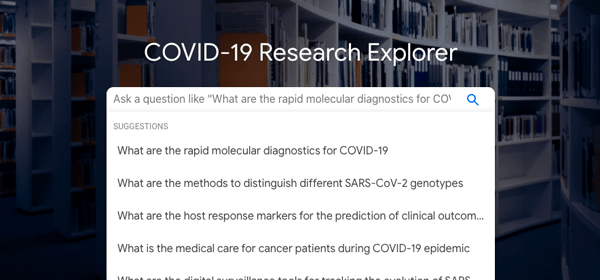
Some of our locations

Some of our people

Ankur Parikh
- Natural Language Processing

Colin Cherry
- Machine Translation
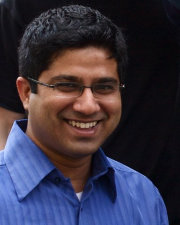
Dipanjan Das
- Machine Intelligence

Fernando Pereira

Filip Radlinski
- Information Retrieval and the Web
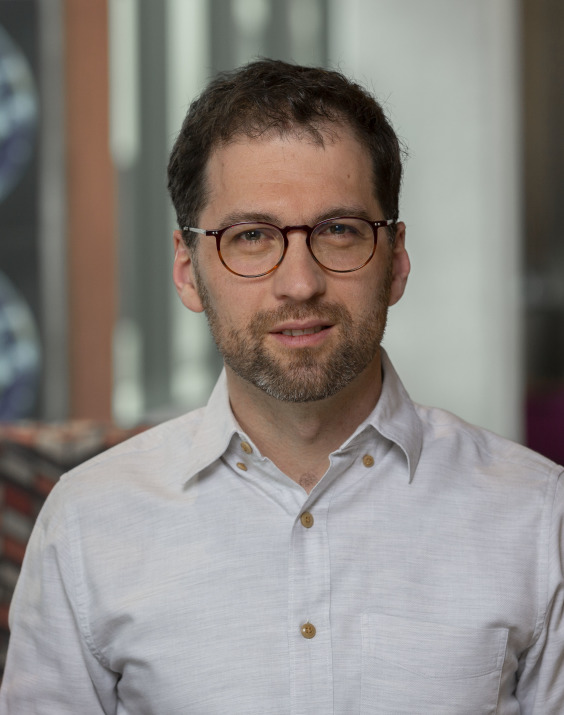
Jacob Eisenstein

Jason Baldridge

Katja Filippova
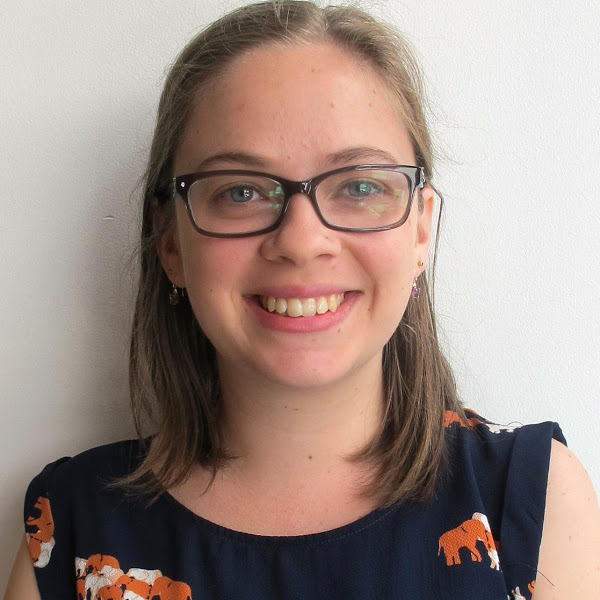
Kellie Webster

Kristina N Toutanova

Massimiliano Ciaramita
- Data Mining and Modeling

Melvin Johnson

Michael Collins
- Machine Learning

Orhan Firat
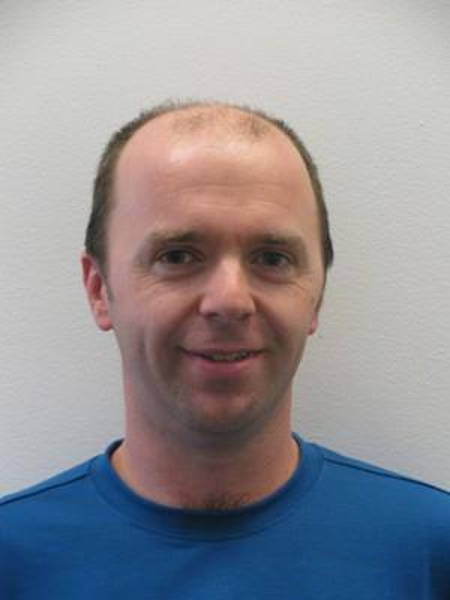
Radu Soricut
- General Science

Slav Petrov

Srini Narayanan

Tania Bedrax-Weiss
- Machine Perception
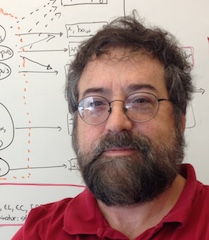
William W. Cohen

Wolfgang Macherey

Yasemin Altun

Yun-hsuan Sung
- Speech Processing
We're always looking for more talented, passionate people.


NASA-IBM Collaboration Develops INDUS Large Language Models for Advanced Science Research

By Derek Koehl
Collaborations with private, non-federal partners through Space Act Agreements are a key component in the work done by NASA's Interagency Implementation and Advanced Concepts Team (IMPACT). A collaboration with International Business Machines (IBM) has produced INDUS, a comprehensive suite of large language models (LLMs) tailored for the domains of Earth science, biological and physical sciences, heliophysics, planetary sciences, and astrophysics and trained using curated scientific corpora drawn from diverse data sources.
INDUS contains two types of models; encoders and sentence transformers. Encoders convert natural language text into numeric coding that can be processed by the LLM. The INDUS encoders were trained on a corpus of 60 billion tokens encompassing astrophysics, planetary science, Earth science, heliophysics, biological, and physical sciences data. Its custom tokenizer developed by the IMPACT-IBM collaborative team improves on generic tokenizers by recognizing scientific terms like biomarkers and phosphorylated . Over half of the 50,000-word vocabulary contained in INDUS is unique to the specific scientific domains used for its training. The INDUS encoder models were used to fine tune the sentence transformer models on approximately 268 million text pairs, including titles/abstracts and questions/answers.
By providing INDUS with domain-specific vocabulary, the IMPACT-IBM team achieved superior performance over open, non-domain specific LLMs on a benchmark for biomedical tasks, a scientific question-answering benchmark, and Earth science entity recognition tests. By designing for diverse linguistic tasks and retrieval augmented generation , INDUS is able to process researcher questions, retrieve relevant documents, and generate answers to the questions. For latency sensitive applications, the team developed smaller, faster versions of both the encoder and sentence transformer models.
Validation tests demonstrate that INDUS excels in retrieving relevant passages from the science corpora in response to a NASA-curated test set of about 400 questions. IBM researcher Bishwaranjan Bhattacharjee commented on the overall approach: “We achieved superior performance by not only having a custom vocabulary but also a large specialized corpus for training the encoder model and a good training strategy. For the smaller, faster versions, we used neural architecture search to obtain a model architecture and knowledge distillation to train it with supervision of the larger model.”

INDUS was also evaluated using data from NASA's Biological and Physical Sciences (BPS) Division. Dr. Sylvain Costes, the NASA BPS project manager for Open Science, discussed the benefits of incorporating INDUS: “Integrating INDUS with the Open Science Data Repository ( OSDR ) Application Programming Interface (API) enabled us to develop and trial a chatbot that offers more intuitive search capabilities for navigating individual datasets. We are currently exploring ways to improve OSDR's internal curation data system by leveraging INDUS to enhance our curation team's productivity and reduce the manual effort required daily.”
At the NASA Goddard Earth Sciences Data and Information Services Center (GES-DISC), the INDUS model was fine-tuned using labeled data from domain experts to categorize publications specifically citing GES-DISC data into applied research areas. According to NASA principal data scientist Dr. Armin Mehrabian, this fine-tuning “significantly improves the identification and retrieval of publications that reference GES-DISC datasets, which aims to improve the user journey in finding their required datasets.” Furthermore, the INDUS encoder models are integrated into the GES-DISC knowledge graph, supporting a variety of other projects, including the dataset recommendation system and GES-DISC GraphRAG.
Kaylin Bugbee, team lead of NASA’s Science Discovery Engine (SDE), spoke to the benefit INDUS offers to existing applications: "Large language models are rapidly changing the search experience. The Science Discovery Engine, a unified, insightful search interface for all of NASA's open science data and information, has prototyped integrating INDUS into its search engine. Initial results have shown that INDUS improved the accuracy and relevancy of the returned results."
INDUS enhances scientific research by providing researchers with improved access to vast amounts of specialized knowledge. INDUS can understand complex scientific concepts and reveal new research directions based on existing data. It also enables researchers to extract relevant information from a wide array of sources, improving efficiency. Aligned with NASA and IBM’s commitment to open and transparent artificial intelligence, the INDUS models are openly available on Hugging Face . For the benefit of the scientific community, the team has released the developed models and will release the benchmark datasets that span named entity recognition for climate change, extractive QA for Earth science, and information retrieval for multiple domains. The INDUS encoder model s are adaptable for science domain applications, and the INDUS retriever model s support information retrieval in RAG applications.
A paper on INDUS, “INDUS: Effective and Efficient Language Models for Scientific Applications,” is available on arxiv.org.
Learn more about the Science Discovery Engine here .
Related Terms
- ISS Research
- Open Science
Explore More

Mapping the Red Planet with the Power of Open Science

Marshall Research Scientist Enables Large-Scale Open Science

Studying the Sun
Science in Space: June 2024 The Sun wields a huge influence on Earth. Its gravity holds our planet in its orbit, and solar energy drives the seasons, ocean currents, weather, climate, radiation belts, and auroras on Earth. The solar wind, a flow of charged particles from the Sun, constantly bombards Earth’s magnetosphere, a vast magnetic […]
- Tools and Resources
- Customer Services
- Applied Linguistics
- Biology of Language
- Cognitive Science
- Computational Linguistics
- Historical Linguistics
- History of Linguistics
- Language Families/Areas/Contact
- Linguistic Theories
- Neurolinguistics
- Phonetics/Phonology
- Psycholinguistics
- Sign Languages
- Sociolinguistics
- Share This Facebook LinkedIn Twitter
Article contents
Language revitalization.
- Aidan Pine Aidan Pine University of British Columbia
- and Mark Turin Mark Turin University of British Columbia
- https://doi.org/10.1093/acrefore/9780199384655.013.8
- Published online: 29 March 2017
The world is home to an extraordinary level of linguistic diversity, with roughly 7,000 languages currently spoken and signed. Yet this diversity is highly unstable and is being rapidly eroded through a series of complex and interrelated processes that result in or lead to language loss. The combination of monolingualism and networks of global trade languages that are increasingly technologized have led to over half of the world’s population speaking one of only 13 languages. Such linguistic homogenization leaves in its wake a linguistic landscape that is increasingly endangered.
A wide range of factors contribute to language loss and attrition. While some—such as natural disasters—are unique to particular language communities and specific geographical regions, many have similar origins and are common across endangered language communities around the globe. The harmful legacy of colonization and the enduring impact of disenfranchising policies relating to Indigenous and minority languages are at the heart of language attrition from New Zealand to Hawai’i, and from Canada to Nepal.
Language loss does not occur in isolation, nor is it inevitable or in any way “natural.” The process also has wide-ranging social and economic repercussions for the language communities in question. Language is so heavily intertwined with cultural knowledge and political identity that speech forms often serve as meaningful indicators of a community’s vitality and social well-being. More than ever before, there are vigorous and collaborative efforts underway to reverse the trend of language loss and to reclaim and revitalize endangered languages. Such approaches vary significantly, from making use of digital technologies in order to engage individual and younger learners to community-oriented language nests and immersion programs. Drawing on diverse techniques and communities, the question of measuring the success of language revitalization programs has driven research forward in the areas of statistical assessments of linguistic diversity, endangerment, and vulnerability. Current efforts are re-evaluating the established triad of documentation-conservation-revitalization in favor of more unified, holistic, and community-led approaches.
- revitalization
- colonization
- globalization
- British Columbia
1 Introduction
To make sense of the many varied paths that language revitalization is taking across the globe, it is necessary to first contextualize the root causes of language endangerment. The very use of the prefix ‘re’ in words such as revitalization, rejuvenation, revival, and resurgence points to the undoing of some past action or deed (Glass, 2004 ). Namely, if the world’s linguistic diversity had not been “devitalized” to begin with—through colonization, imperial adventure, war, and forced migration—there would be less need for historically marginalized languages with ever-dwindling numbers of speakers to be “revitalized” today. The work of language revitalization is inherently multidisciplinary and very often political, with long-range cultural and social goals that extend beyond the immediate task of generating more speakers. Through illustrative examples and case studies from British Columbia, Hawai’i, and Aotearoa (New Zealand), this contribution demonstrates that language revitalization programs are as much focused on decolonizing education and plotting a path toward self-determination as they are directed at reclaiming grammar and speech forms.
More nuanced techniques for evaluating progress and success in language revitalization efforts have emerged from a deeper understanding of the distinct goals of individual revitalization projects. Methods include quantitative scales backed by international non-governmental organizations, tracking and status reports on linguistic vitality and speaker numbers from governmental organizations as well as broader social scientific investigations into correlations between community health, well-being, and language vitality. The next steps will involve developing evaluative criteria that are grounded in local understandings of impact and success, rooted in the lived experiences and aspirations of Indigenous communities. Language revitalization, driven by the crisis of language endangerment, is a dynamic subfield experiencing rapid growth, with the roles and responsibilities of the various stakeholders in considerable flux. Through an inclusive understanding of the sociopolitical, historical, Indigenous, 1 and academic contexts that shape language revitalization projects, collaborative and productive relationships between language communities, governments, and academics are emerging, breathing renewed life into historically marginalized languages across the globe.
2 Marginalization and Devitalization of Language
2.1 sociopolitical context and colonial policy.
Statistics and enumeration aside, endangered languages and the communities that speak them are under extreme stress. Even conservative estimates paint a picture of near-catastrophic endangerment levels, with half of the world’s remaining speech forms ceasing to be used as everyday vernaculars by the end of the 21st century (Krauss, 1992 ). The pressures facing endangered languages are as severe as those recorded by conservation biologists for flora and fauna, and in many cases more acute (Sutherland, 2003 ). Yet linguistic endangerment is by no means a natural or inevitable process, the unfortunate by-product of modernization. Rather, the marginalization and erosion of local and Indigenous languages is the direct result of colonization and the racist policies that accompanied it. Across the world and through a variety of efforts that have included education initiatives, punitive legislation, and intentional neglect, colonial authorities have instituted language policies that sought to weaken traditional cultural ways, assimilate Indigenous populations, and gain access to their land and resources.
Conscious that “language is the perfect instrument of empire” (Morris, 2003 , p. 103), the architects of colonial advancement were highly effective in using language to underwrite the success of their imperial ventures. Although Indian residential schools in Canada, American Indian boarding schools in the United States, native schools for Māori in New Zealand, and Christian missionary schools in Hawai’i were governed and shaped by diverse motivations, they were united by a prejudiced belief that Indigenous languages were backward, primitive, and incompatible with modernity and Western values. Richard Henry Pratt ( 1840–1924 ), founder and long-time superintendent of the influential Carlisle Indian Industrial School in Pennsylvania, summed up this prevailing sentiment when he pugnaciously proposed that the government must “kill the Indian … to save the man.” In such schools, the goal was for English (or another colonizing language such as French, Spanish, or Portuguese) to overwrite local languages and for Western Christianity to supplant Indigenous belief systems and traditional ways, thus forcing the dislocation of Indigenous peoples from their land, territories, and systems of traditional knowledge and governance. Colonization did not always come from the outside or lead to permanent settlement; some nations were internally colonized and then subjugated by their own elites, who then advanced, as in the case of Nepal, a single state-sponsored language and religion in the name of unification and nation building (Turin, 2006 ).
Colonial authorities used the power of language and the language of power to further their own strategic ends. In some cases, and seemingly paradoxically, this involved supporting Indigenous languages; in most cases, however, they sought to erode them. In the first instance, believing in the inherent superiority of Christian theology, many missionary linguists focused on translating scripture into Indigenous languages. In Papua New Guinea and other regions of the Asia Pacific, scholars and administrators actively strengthened Indigenous languages through standardization programs that involved grammatical descriptions and the compilation of dictionaries and other pedagogical tools (Wurm, Muehlheausler, & Laycock, 1977 ). The goal—in many cases—was for local languages to be harnessed to transmit and disseminate an imagined Christian modernity. In other instances, as in Canada, settler-colonial authorities observed the unique relationship that existed between a language and the land on which it was spoken and focused their attention on breaking this apart by destroying the language and forcibly relocating communities far away from their traditional territories.
To this day, Indigenous communities around the world make use of traditional place names to ascribe current or historical meaning to places and spaces that are locally resonant and historically important. Such toponyms often encode lived experience and traditional ecological knowledge in an ancestral language in a way that is almost impossible to translate into a more dominant national or international language. By disconnecting the language traditionally used to refer to a specific site, and by introducing new place names in a colonial language (the terms “New Zealand” and “British Columbia” serve as enduring examples), the relationship that local peoples have with their land was rendered more opaque and attenuated. Having weakened this connection to land, the colonial goal of relocating communities in order to extract resources from their territories became more achievable.
In the 1800s, a range of legislative provisions were introduced throughout the colonized world that sought to justify colonial expansion through the advancement of colonial languages. Passed in 1835 , the English Education Act required that all government funding for education and literature in British India be dedicated to the development of the English language, diverting resources away from critical and widely used languages such as Sanskrit, Persian, and Arabic, which had been previously supported. The tabling of this Act reflects a wider imperial linguistic agenda that would have long-lasting implications across the world. Politician and historian Thomas Babington Macaulay ( 1800–1859 ) lent his name to the now infamous “Macaulay Minute” in which he asserted that it was “no exaggeration to say that all the historical information which has been collected from all the books written in the Sanskrit language is less valuable than what may be found in the most paltry abridgement used at preparatory schools in England” (Macaulay, 1835 ). By the middle of the 19th century , the educational goals of the British empire had solidified: an education administered in English was understood to be inherently superior to any training, understanding or knowledge that could be derived from another language, particularly languages spoken beyond the boundaries of Western Europe. The formalization of this formulation had an immediate and devastating impact on Indigenous languages across the colonized globe: the Canadian residential school system was established soon after, in the 1840s, while in New Zealand, the Native Schools Act mandated an English-only approach to education starting in 1867 (Simon & Smith, 2001 ). Beneath the thin veil of education and “civilization,” such schools were a means to eliminate Indigenous communities as obstacles to land acquisition, resource extraction, and nation building (Woolford, 2015 ).
Yet, for as long as efforts have existed to impose colonial languages on Indigenous peoples as a means of reshaping their identity, these same processes have been vigorously opposed by speakers of these languages. Anti-colonial opposition to externally imposed language policy takes many forms, from active resistance to passive non-compliance. Everyday forms of resistance have included the direct avoidance of colonial education programs by concealing children and evading census enumerators to more contemporary and structured efforts at language revitalization and reclamation. The emergence of the Caribbean linguistic mosaic can be seen as an anti-colonial response predicated on “the need to speak and not be understood by the downpressors (slave masters, elite of society)” (Barcant, 2013 , p. 51). Viewed in this light, the creation of a patois/patwah or creole/kweyol can be read as a linguistic manifestation of a moral objection to the imposition of a hegemonic identity advanced by an imperial state, a perspective further substantiated by the Métis of Canada, who “moulded the aboriginal and settler languages into coherent patterns which reflected their own cultural and historical circumstances” (Michif Languages Conference, 1985 ).
The long march toward decolonization continues. In 2015 , the Truth & Reconciliation Commission of Canada (TRC) released its report detailing the history of Indigenous peoples’ lived experiences through the nation’s residential school period that lasted from 1883 to the late 1990s. The TRC heard over 6,000 testimonies and affirmed that “[t]hese residential schools were created for the purpose of separating Aboriginal children from their families, in order to minimize and weaken family ties and cultural linkages” (Truth and Reconciliation Commission of Canada, 2015 ). Noting the many brutal and dehumanizing mechanisms that supported, funded, and sanctioned the institutionalized neglect of Aboriginal children, the TRC proposed a list of recommendations and calls to action that would set Canada on a path to reconciliation for the terrible wrongs committed during this period. Relevant to language revitalization are clear suggestions and proposals on how to shape a national language policy in a manner that would address the impact of over 100 years of language policy that prohibited and punished the use of Indigenous languages in residential schools. The TRC report offers five tangible recommendations that include the creation of an Aboriginal Languages Act, the introduction of an Aboriginal Languages Commissioner at the federal level of government, and an acknowledgment that Aboriginal rights include rights to speak and preserve Indigenous languages. Under the leadership of Prime Minister Justin Trudeau, the government of Canada has pledged to implement each point in the TRC’s Calls to Action (Statement by Prime Minister, 2015 ). While Canada is internationally celebrated for its official language policy in which French and English—both languages introduced by colonial settlers—are placed on an equal footing, it is worth noting that not a single language Indigenous to Canada has “received” national recognition.
Overall, to make sense of contemporary efforts to revitalize Indigenous languages, it is essential to understand the political and historical context that has shaped their marginalization. Revitalization would not be needed had these languages not been asphyxiated to begin with. The growing recognition of the legacy of colonial oppression of Indigenous languages has also motivated a realignment of the discourse around language endangerment. The majority of languages spoken across the world have endured punitive policies that actively sought to eradicate them. Their continued use to this day—even if only by a handful of speakers in some cases—is indicative of the resilience of communities in the face of continued oppression. Commonly used terms that highlight the “endangered-ness” of a language—we may think of words such as “weak,” “loss,” and even the word “endangered” itself—overrepresent diminishment and underrepresent the resurgent strength of communities of speakers who have never stopped using their ancestral languages. Furthermore, the currency of terms such as “vanishing” and “disappearing” not only forecloses the possibility of revival and renewal but communicates an apparently agentless process in which language loss is both inevitable and naturally occurring. Such terminology both effaces the intentionality of colonial policies that legislated marginalization and undermines the efforts of those working to reclaim their languages. When speaking and writing of “endangered languages,” then, it is crucial to remain attentive to the words that are used and to seek balance in highlighting ongoing community revitalization efforts on the one hand, while historically contextualizing the increasingly vulnerable state of most Indigenous languages on the other.
2.2 Measuring Language Endangerment, Revitalization, and the Effects of Language Loss
As strategies for language revitalization deepen and widen, the techniques used to evaluate success and impact must become both more grounded in community goals and better informed by analytical rigor. The urgency of the work of language revitalization further requires that communities be expedient and efficient in their application and choices, a process that can be aided through robust and comparative data. Language communities are in the best position to identify the language revitalization-related questions that they need research to answer, and care must be taken to avoid positioning them as competitors with universities for funding resources and visibility.
A widely used and highly regarded method for gauging the status and prospects of a language is the UNESCO Language Vitality Assessment (Figure 1 ; Brenzinger et al., 2003 ). This tool advances a holistic approach for measuring linguistic vitality that draws on multiple elements, since “no single factor alone can be used to assess a language’s vitality or its need for documentation” (Brenzinger et al., 2003 , p. 7).
Figure 1. A visual representation based on the UNESCO Language Vitality Assessment (from Brenzinger et al., 2003 ).
In this assessment, nine factors are evaluated on a 5-point scale, with the exception of the second component, which records the absolute number of speakers. The UNESCO approach does not advocate an even weighting across all indicators and rather proposes that elements should be weighted according to local community norms. While this assessment tool provides an accurate snapshot of the overall health of a language, its adjustable framework makes it harder to compare vitality—and in turn language revitalization programs—cross-linguistically.
The 13-stage Expanded Graded Intergenerational Disruption Scale (EGIDS) (Lewis & Simons, 2010 ), used by the popular if historically problematic Ethnologue (Dobrin, 2009 ), offers a standardized approach for evaluating the vitality of a language that allows for simple comparisons with other languages spoken and signed around the world. The scale ranges from 0 (International) to 10 (Extinct) and is often portrayed as in Figure 2 , where the x -axis represents the EGIDS level, the y -axis represents native speaker population, and the plotted points represent individual languages. Through a search function on the Ethnologue website, individual languages can be highlighted on the graph.
Figure 2. An EGIDS graph with the yellow dot showing Gitksan (Tsimshianic) (from Lewis, Simons, & Fennig, 2016 ).
Too often, however, metrics such as the EGIDS are used to represent the absolute success (or failure) of a revitalization program, failing to capture the significance of the additional cultural goals that such an intervention might carry. While the primary aim of most language revitalization programs is to increase the number of fluent speakers, as well as the proportion of semi- or partial speakers within the greater population, these are not the only goals of community-led language reclamation programs. Bearing in mind the historical context described in section 2.1, and recalling the central relevance of language to many other aspects of community well-being, the transformative healing nature and holistic benefits of language revitalization have much wider impact and relevance than linguistic vitality alone (Whalen, Moss, & Baldwin, 2016 ). Underscoring the interrelatedness of language and community well-being, a recent Canadian study showed a compelling correlation between Indigenous language use and a decrease in Aboriginal youth suicide rates in British Columbia (Hallet, Chandler, & Lalonde, 2007 ). Such statistical research helps to highlight the multidimensional nature of language revitalization and its cross-sector impact on the lives and livelihoods of Indigenous communities.
Accordingly, the question of what constitutes “successful” language revitalization may need to be re-evaluated (Hinton, 2015 ). Conventionally, the absolute number of fluent speakers of a language remains the most discernible factor that is tracked and measured, but language revitalization projects that focus on creating a cultural context for more semi-speakers can have equally important and lasting impact. Community-led language revitalization projects that prioritize youth engagement with traditional cultural and environmental knowledge may be as much focussed on sustainable well-being as they are on grammar, words, and orthographies.
Honesty about what counts as success and how it can be measured is an important aspect of planning a language revitalization project and can also help to guide curricular decisions in the classroom. The structure of any language revitalization program must be driven by the goals of the language community in question. Only once these are discussed and articulated, through a process of community-directed planning and consultation, can appropriate evaluative metrics be developed. The Mentor-Apprentice program focuses on bringing dedicated individual learners to a high level of fluency through intensive exposure to their ancestral language in whatever way is most culturally salient and appropriate. This effective and intentionally small-scale, personalized, and grassroots approach embodies the belief that language revitalization happens one speaker at a time (Hinton, 2001b ). Since its inception in 1992 by the Native California Network (Hinton, 2001b , p. 219), the Master-Apprentice (and later Mentor-Apprentice) program has spread across the United States as well as internationally in Australia (Olawsky, 2013 ) and Finland (Olthuis, Kivelä, & Skutnabb-Kangas, 2013 ).
Inspired by the Mentor-Apprentice program and by accessible handbooks such as Bringing Our Languages Home: Language Revitalization for Families (Hinton, 2013 ), written for a community audience, speakers and learners have felt empowered to bring ancestral languages back into their lives. Organizations such as the First People’s Cultural Council (FPCC) in British Columbia provide funding and administrative support for Mentor-Apprentice partnerships, helping to alleviate some of the financial burden associated with the substantial commitment of time and resources that such partnerships require. Whether highly structured and systematic, or informal and community-directed, Mentor-Apprentice programs assume a definition of success that is predicated on an individual learner’s ability to become proficient and ultimately fluent in a language. It should be noted that resource intensive Mentor-Apprentice programs focussed on individual partnerships can be antithetical to the mandates of policy makers and governmental granting bodies, whose funding modalities are usually driven by a conviction that impact can be maximized by ensuring the widest possible access.
With language revitalization increasingly situated as an expression of self-determination and political empowerment, some language communities are developing a terminology for discussing endangerment and revitalization that is in itself empowering. One example is a movement to refer to languages without any current L1 (native or first-language) speakers as “sleeping” rather than “extinct” (Hinton, 2001a ). While the distinction might appear unnecessary or even naively aspirational to researchers not closely involved in such work, all terminology has both symbolic value and political impact. The biological extinction of a species has a mono-directional finality that linguistic “extinction” does not. As Indigenous linguist Wesley Leonard poignantly notes, “the paradox of speaking an extinct language is not imaginary” ( 2008 , p. 28). The designation “sleeping” rather than “extinct” points to the potential of a language to be reclaimed and revived after it has lost its remaining L1 speakers—an opportunity that is not available to the dodo or a dinosaur. While bringing a language back from sleeping to having a community of fluent speakers is a phenomenon that has been uncommon in human history, there are recent examples, such as the remarkable and compelling case of the Wampanoag (Algonquin) language, which was sleeping from the late 19th century until revitalization efforts resulted in fluent child speakers of the language in the 21st century (Makepeace, 2010 ).
When active language planning and restoration is effective, as in the case of the development of modern spoken Hebrew following the establishment of the state of Israel, it is often the result of a combination of historical motivation, political self-determination, cultural revival, and community mobilization. Even so, there are notable characteristics that appear unique to languages that undergo a successful transition from sleeping to awake. This is certainly the case with modern spoken Hebrew, which “is based simultaneously on ‘sleeping beauty’ / ‘walking dead’ Hebrew and ‘máme lóshn’ (mother tongue) Yiddish, which are both primary contributors to Israeli, and a plethora of other tongues spoken by Jewish pioneers in Palestine in the 1880s–1930s, e.g. Russian, Polish, Arabic, Ladino (Judeo-Spanish), Turkish, German, French and English” (Zuckermann & Walsh, 2011 , p. 114). Even in the event that a language is effectively revitalized, the resulting speech form will inevitably have been shaped by language contact and by the mother tongue of the revitalizers themselves. In some cases there is resistance to such adaptation within speech communities: elders may find it hard to accept a new and changed linguistic reality, perceiving the revived language to be a hybrid amalgam or simply incorrect. Linguistic authenticity remains a pervasive notion in which “the supposed ideal is intergenerational transmission of the language with all its original structural complexity retained, thus creating unrealistic expectations among the Aboriginal community” (Zuckermann & Walsh, 2011 , p. 113). While the achievement of establishing modern Hebrew is beyond doubt (Spolsky, 1995 ), it is by no means the only effective language revitalization effort. For peoples like the Myaamia (Algonquin), who have no first language speakers left, “the ultimate goal of this work is to eventually be able to raise our children with the beliefs and values that draw from our traditional foundation and to utilize our language as a means of preserving and expressing these elements” (Baldwin, 2003 , p. 28). Rather than some ideal, end-state fluency, it is the sustained effort of communities that shape and determine the goal and success of any language revitalization project. As all who are engaged in language revitalization can attest, the work is never complete: success starts when revitalization efforts begin and doesn’t end until efforts themselves cease (Hinton, 2015 ).
3 Language Revitalization: Goals and Examples
As a practice, language revitalization takes many shapes. Some of the earliest language activists were the children and students who, risking corporal or psychological punishment, continued to speak their languages in residential and boarding schools and at home with their families. Since the retraction of explicit bans on speaking Indigenous languages in public in many countries, some of which have only been lifted within the last few decades (Anchimbe, 2006 ; Bulcha, 1997 ), language revitalization has become noticeably less subversive. Many language revitalization programs now receive support from band councils, non-governmental organizations, philanthropic foundations, and even governmental bodies and programs.
Much of the language activism witnessed in the mid-to-late 20th century in Anglo settler-colonial contexts such as Canada, the United States, and Australia focused on the development of orthographies (writing systems) and lexicography (dictionary compilation) projects. While the latter continues, the former—at least in Canada and the United States—is now mostly complete, although substantial disagreements exist within speech communities who may be divided by competing writing systems (see Hinton, 2014 ). There are notable exceptions to the historical trajectory outlined above. The Māori have made good use of a practical orthography since the early 19th century ; the Canadian syllabary for Algonquian, Inuit, and Athabaskan languages was in active use from the mid- 18th century ; and the Cherokee syllabary developed by Sequoyah (ca. 1770–1843 ) has been used from the very early 19th century . Developing and standardizing practical writing systems continues to be a central focus for many recent language revitalization projects across South Asia, Africa, and Oceania, where a vast number of Indigenous languages are still spoken and the structures and patterns of colonial government were quite different from North America and Australia, leading to distinct post-colonial legacies.
In continental North America, following the development of orthographies, beginner dictionaries became the focus for many language revitalization initiatives, alongside the introduction of teaching curriculum for a number of languages including Gitksan (Tsimshianic), Kwak’wala (Wakashan), Inuktitut (Inuit), and Cree (Algonquin) (Barnett, Seymour, & Raine, 1975 ; Cree Productions, 1973 ; Jensen & Powell, 1979 ; Kativik School Board, 1979 ; Powell, Cook, Cranmer, & Jensen, 1981 ). In parallel, immersion schools and language nests were becoming the focus of Indigenous revitalization movements elsewhere, including the pūnana leo in Hawai’i (Watson-Gegeo, 1989 ) and kōhanga reo in Aotearoa (also known as New Zealand) (Hohepa, 1984 ), from which the English term “language nest” derives. Since the 1980s, the visibility and impact of the Hawaiian and Māori initiatives have inspired other language nest–style immersive language programs around the world.
Initiated as a response to concerns that Māori youth had inadequate exposure to their language through the growing dominance of English, the kōhanga reo program sought to provide an immersive environment for Māori children to gain early exposure to, and receive education in, Māori. Over 450 kōhanga reo programs have been established throughout Aotearoa serving children from birth to age six. There has been a significant drop in enrollment since a peak in the 1990s. In 1996 , 46.3% of Maori children were enrolled in kōhanga reo as compared to only 20.4% in 2009 (Statistics New Zealand “Maori : Growth in early childhood education,” 1996 ; New Zealand Childcare Survey, 2010 ). While this drop is of concern to many language activists in Aotearoa and beyond, it still represents an unparalleled level of access that Māori children have to immersive Māori language early childhood education as compared with the opportunities available for speakers of other endangered languages.
Building on the success of the pre-school kōhanga reo programs, primary ( kura kaupapa Māori) , secondary ( kura tuarua ), and post-secondary ( wananga ) Māori immersion school programs were developed, all of which support Māori community members in accessing a comprehensive education shaped by Indigenous Māori cultural and linguistic values (Hingangaroa Smith, 2003 ). Part of the success in implementing this integrated program for so many students across all ages, aside from the unflagging dedication and commitment of the Māori people themselves, can be attributed to the wider geographical and linguistic landscape of the region in which Māori is spoken. Māori is the principal Indigenous language of Aotearoa (a number of other languages are spoken outside of the main islands, such as Penrhyn [Tahitic]), and standardization occurred relatively early. The result is that curricula and legislative efforts have been concentrated in a way that is hard to imagine in linguistically diverse regions like California or British Columbia, let alone resource-strapped Nepal or Papua New Guinea. The reduced linguistic diversity that is more common in island-states appears to provide a strategic advantage for revitalization efforts in terms of resource allocation and perceived impact.
In some language communities where orthographies have either not been standardized or remain in dispute, revitalization strategies prioritize spoken competence and oral transmission over classroom instruction that focuses on writing and texts. The Accelerated Second Language Acquisition (ASLA) method, developed by Dr. Stephen Greymorning, encourages learners to rely on visual and pragmatic cues to learn language and is particularly popular among Indigenous communities in North America. Similarly, the Where Are Your Keys (WAYK) method has been used widely and combines various gestures and techniques to keep learners communicative without relying on using English or their mother tongue. The WAYK technique has been used by Indigenous language communities across Canada and the United States, including Unangam Tunuu (Aleut), and even for spoken Latin.
Influenced by the success of kōhanga reo in Aotearoa, the Secwepmec (Salish) community of Adams Lake founded the Chief Atahm Immersion School in 1991 . The school offers immersion programs for children (birth to age five), part-time language classes for grades four to nine, and community language classes for adults. The Chief Atahm Immersion School makes use of a technique known as Total Physical Response (TPR), which relies heavily on somatosensory stimulation to promote language learning. Chief Atahm Immersion School is the first Indigenous language immersion school in British Columbia, but not the first in Canada, with the Mohawk (Iroquoian) language immersion program in Kahnawake, Quebec, dating to 1979 . The Mohawk program took its cue from French language immersion programs which were gaining momentum in the 1970s as a part of Quebec’s assertion of a Francophone identity. While impressive and certainly effective, immersion programs are not one-way tickets to native levels of fluency. Immersion programs operate best when there are sufficient extracurricular environments in which students can interact in and use the language during play and everyday communication. The dominance of English in the wider environment that surrounds many immersion programs often affects a learner’s ability and desire to speak the language outside of the immersion setting and can even influence a learner’s acquisition of the immersion language. Preliminary research demonstrated that a learner at Chief Atahm School was overregularizing her use of independent pronouns in Secwepemctsin (a polysynthetic language) under the influence of her extracurricular exposure to English (Lai & Ignace, 1998 ).
Other grassroots language reclamation programs have few resources and no formal support. Every day, across the world, informal classes and gatherings at homes, community halls, churches, and schools bring together people who are interested in learning or relearning their languages. Sometimes these programs are taught by L1 speakers, while other times they are led by very committed student learners or semi-fluent speakers. Combining a mixture of curriculum developed by the Paul Creek Language Association and Darrell Kipp’s controversial advice about language revitalization, 2 language activist and educator Michelle K. Johnson, together with four dedicated students, created their own immersion class. For five months, located at a remote site along the Canada/U.S. border, they spent a strict eight hours per day immersed in the Nsylxcin language (Salish), including 20 hours a week of active curriculum learning (Johnson, 2012 ). According to levels set by the American Council on the Teaching of Foreign Languages, after emerging from this intense and intensive form of immersion, each of the learners had progressed from being a complete non-speaker to attaining a low-intermediate conversational level. While the Nsylxcin immersion program was intentionally more vigorous than most grassroots community language revitalization initiatives can afford to be, it represents what can be achieved with little formal or institutional support.
Increasingly, universities and colleges are offering courses in Indigenous languages, often in collaboration with the Indigenous communities on whose territory the institution is located. Across North America, language activists and teachers are developing curricula that adhere to the second-language requirements of their respective school districts. By developing curricula within these guidelines, courses may be eligible for second-language accreditation toward high school students’ graduation language requirements. A case in point is the long-standing partnership between the Musqueam Indian Band and the First Nations and Endangered Languages Program (formerly the First Nations Languages Program) at the University of British Columbia in Vancouver. Initiated in 1997 as part of the university’s commitment to community-based collaboration with First Nations peoples, the primary purpose of the partnership has been to promote the development and use of hən̓q̓əmin̓əm̓, the Musqueam Central Coast Salish language, through collaborative research and teaching initiatives. In the nearly two decades since it began, this collaboration has produced several formal research papers, a series of elementary resource books, and a full complement of text and interactive online materials that support four levels of hən̓q̓əmin̓əm̓ language courses for post-secondary credit. These courses are open to both university and Musqueam students and serve as a powerful model for reconciliation. Another example is Six Nations Polytechnic, an Aboriginal-owned and -controlled post-secondary institution at Six Nations of the Grand River First Nation. The Polytechnic offers a three-year Bachelor of Arts in Ogwehoweh Languages in which Mohawk or Cayuga language and grammar are the core area of study, supplemented by courses in Indigenous history, culture and tradition, translation, ethno-astronomy, and ethno-botany. The strategic goal of the Bachelor of Arts in Ogwehoweh Languages is one of decolonization and self-determination: to further the continued development of Ogwehoweh cultural understanding within an Ogwehoweh language context.
In the United States, the first Indigenous language immersion school was founded in Hawai’i in 1983 by the non-profit ‘Aha Pūnana Leo. The program offers early childhood education in Hawaiian and is the result of a sustained collaboration between the University of Hawai’i and the wider community. The University of Hawai’i also offers graduate degree programs for students that are entirely in Hawaiian, and Hawaiian language theses are increasing in popularity in disciplines ranging from linguistics to history and literature. The impressive range of kindergarten to post-secondary graduate instruction makes the Hawaiian language revitalization effort one of the most comprehensive programs in the world and also ensures that the alumni of pūnana leo early childhood education programs have more advanced programs through which they can further scaffold their education in Hawaiian should they choose to do so. The lack of such laddering plagues many other language revitalization programs: while there are often many resources available for beginner-level language learning, there is a dearth of material to engage more advanced speakers and adults. Ulukau , the Hawaiian Electronic Library, offers a creative solution. The online database and archive serves as a repository for a wide variety of materials designed for Hawaiian speakers of all levels, from beginner to advanced language competency. Along with dictionaries, curricula, and a collection of fiction and non-fiction literature, the site also hosts a compendium of Hawaiian-language newspapers published between 1834 and 1948 . This remarkable online resource has many uses: it functions as a memory bank for over a century of Indigenous Hawaiian intellectual work and artistic creation, a way of supporting advanced speakers of Hawaiian who wish to further hone their reading skills, and a platform for engaging the now sizable Hawaiian diaspora who are looking for opportunities to connect with content in the Hawaiian language.
Initiatives like Ulukau fuse language revitalization with language documentation and cultural preservation. Documentation and revitalization have traditionally been thought of as quite separate and distinct endeavors, each with distinct goals that only occasionally intersect. Revitalization projects are usually defined as seeking to (re-)create fluency within a language community through the kinds of initiatives outlined above. Documentation, however, aims to describe a language in as much detail as possible for any number of different reasons, including future revitalization, curriculum development, cross-linguistic analysis, or simply for generating more complete scientific knowledge of humanity’s linguistic diversity. A key element that helps to blur the line and bridge the divide between documentation and revitalization is the notion of access. Making documentation available via the Internet ensures that living speakers are afforded a way of engaging with the material that contributes to the goals of language revitalization. This blending of revitalization and documentation through digital availability is evidenced in many endangered language dictionary projects which make lexicographic materials available online or through mobile devices.
Mobile device applications have experienced massive growth in popularity over the past decade in tandem with the increasing ubiquity of smartphones. Apps vary considerably in terms of their functionality, accessibility, and stability. There are many bare-bones mobile phone apps offering minimal functionality (simply the option to browse through various words, for example), while others serve primarily as prestige tools—platforms without significant practical language learning or reference functionality that have been developed to engage younger people in the community and combat damaging stereotypes of Indigenous languages being “antiquated” or incompatible with modern technology. There are also, however, many apps that make use of audio, video, and sophisticated search algorithms to deliver a powerful and portable learning environment for language reclamation (Littell, Pine, & Davis, 2017 ). While some apps are created as isolated projects by a specific language community, the Miromaa Aboriginal Language & Technology Centre (MALTC) in Australia and the First People’s Cultural Council (FPCC) in Canada are organizations committed to developing and maintaining apps for many different language communities around a common code base and shared technical infrastructure.
The FPCC, which also supports Mentor-Apprentice partnerships and produces regular reports on the status of First Nations languages in the province of British Columbia, released a keyboard app in May 2016 that supports unique language-specific characters to be typed on smartphones for over 100 languages, providing users with a way to text and search the web using their own orthography. Funded by the FPCC since 2000 , a project entitled FirstVoices has developed a suite of web-based tools and services to support Aboriginal people engaged in language archiving, language teaching, and culture revitalization. The FirstVoices Language Archive contains thousands of text entries in many diverse Aboriginal writing systems, enhanced with sounds, pictures, and videos. A companion set of interactive online games was designed to present the archived FirstVoices language data in creative learning activities, and dictionary language apps have been developed for 13 First Nations language communities across the province of British Columbia. New platforms for digital dissemination such as these can help to enhance the quality and scope of more traditional language documentation work. For example, rather than situating the responsibility for adding missing words, making corrections and checking dialectal variation with the technical (and often non-Indigenous) “creators” of a dictionary, the community’s involvement with and immediate use of digital resources for purposes of revitalization provides essential user feedback and community perspectives that improve both the accuracy and the utility of a lexicography project. Overall, new digital technologies are helping to foster increasingly collaborative forms of research that have the potential to be less hierarchical, more democratic, and better positioned to mobilize language resources within communities in multimodal ways that engage youth and elders alike.
While new technology has been leveraged to disseminate and democratize access to archives and collections, other efforts seek to achieve a similar impact in contexts where archival materials and historical collections are not so easily mobilized or transcoded. The U.S.-based National Breath of Life initiative facilitates informed community access to important documentary and archival resources. The project pairs community members with trained linguists who come together in Washington, D.C., to investigate and explore collections related to specific languages in some of the capital’s most extensive libraries, including the Smithsonian Institution and the Library of Congress. Alongside promoting physical access to these unique collections, the involvement of a linguist as a partner can expedite the deciphering of heritage collections and support capacity development within the Indigenous research community. Based on the success of the National Breath of Life, a number of regional workshops across North America have been organized to help endangered language communities locate and mobilize language resources held in local archives and libraries.
The role of linguists in language documentation and revitalization projects has become more complex, contested, and political over time. Increasingly, partnerships between linguists and communities are founded and maintained on notions of mutual benefit, ethical engagement, respect, reciprocity, and trust. Yet there are also examples of partnerships that are far more controversial. Disagreements over the goals of the partnership (whether academic or community focussed, for example), intellectual property rights, authorship, accreditation, and compensation have resulted in strained and occasionally broken relationships between outside scholars and language communities. This tension has led to the suggestion that “sometimes no fieldwork on an endangered language is better than some” (Grinevald, 2003 , p. 9), a statement that is antithetical to the established and conventional wisdom of standard documentary (what some scholars unapologetically refer to as “salvage”) linguistics.
Explicitly addressing the skillset that a particular linguist brings to a community and what communities stand to gain from such a relationship are central to avoiding future conflict. Importantly, “good intentions are not sufficient to give good and useful results, and we must be self-reflective and self-critical about the sort of practices we engage in that unwittingly exacerbate rather than alleviate the problem” (Wilkins, 2000 , p. 63). In some cases, communities have felt that their knowledge and voices have been used to advance the career of an outsider and caution others against inviting a linguist into their community. It has been poignantly noted that that there is a good chance an “outside linguist will learn your language, but your children won’t.” If language revitalization is to be a positive experience for all involved in the work—scholars from the outside and Indigenous scholars and knowledge keepers within language communities—deliberate and sometimes difficult discussions must be had which address the specific sociohistorical context that has resulted in the marginalization and endangerment of the language, the desired outcomes and tools for measuring success in revitalization, and the expectations that each party has of the other’s involvement. Candor in such matters, as well as transparency in budgeting, remuneration, and ownership of resulting data, can help to establish a more equitable and ethical baseline for collaborative work in language revitalization.
While the alarms bells have sounded and the threat of languages ceasing to be spoken remains a reality for increasing numbers of communities, the indomitable human spirit in the face of adversity should not be underestimated. Language communities across the globe have proven throughout history that the odds can be beaten and that the effects of colonization are surmountable. Indigenous communities must be supported and resourced to design and implement their own research agendas, funding needs, and success criteria for language revitalization and reclamation work. Through engaging in collaborative linguistic and cultural revitalization work, building partnerships, communities of practice and resources at academic, governmental, and grassroots levels, the tide can be turned and more languages will join the ranks of Hawaiian, Māori, Myaamia, and Wampanoag.
Further Reading
- Austin, P. (2008). 1000 languages. The worldwide history of living and lost tongues . London: Thames & Hudson. Retrieved from http://eprints.soas.ac.uk/5576/ .
- Bradley, D. , & Bradley, M. (2013). Language endangerment and language maintenance: An active approach . London: Routledge.
- Calvet, L. J. (1998). Language wars and linguistic politics . Oxford: Oxford University Press.
- Carpenter, J. , Guerin, A. , Kaczmarek, M. , Lawson, G. , Lawson, K. , Nathan, L. P. , et al. (2016) Digital access for language and culture in First Nations communities . Ottawa: Social Sciences and Humanities Research Council of Canada.
- Crystal, D. (2000). Language death . Cambridge, U.K.: Cambridge University Press.
- Dalby, A. (2003). Language in danger: The loss of linguistic diversity and the threat to our future . New York: Columbia University Press.
- Evans, N. (2011). Dying words: Endangered languages and what they have to tell us . Hoboken: John Wiley & Sons.
- Fishman, J. A. (1991). Reversing language shift: Theoretical and empirical foundations of assistance to threatened languages . Clevedon, AVN, U.K.: Multilingual Matters.
- Fishman, J. A. (2001). Can threatened languages be saved? Reversing language shift, revisited: A 21st century perspective . Buffalo: Multilingual Matters.
- Hendriks, V. , Janse, M. , & Tol, S. (2003). Language death and language maintenance: Theoretical, practical and descriptive approaches . Amsterdam: John Benjamins Publishing.
- Hinton, L. (2013). Bringing our languages home: Language revitalization for families . Berkeley: Heyday.
- Hinton, L. , & Hale, K. (2001). The green book of language revitalization in practice . San Diego: Academic Press.
- Hinton, L. , Vera, M. , & Steele, N. (2002). How to keep your language alive: A commonsense approach to one-on-one language learning . Berkeley: Heyday.
- Hobson, J. R. (2010). Re-awakening languages: Theory and practice in the revitalisation of Australia’s Indigenous languages . Sydney: Sydney University Press.
- Cash Cash, P. (2017). Indigenous languages and technology [Electronic mailing list] . Retrieved from http://www.u.arizona.edu/~cashcash/ILAT.html .
- Jones, M. C. (2014). Endangered languages and new technologies . Cambridge, U.K.: Cambridge University Press.
- Nettle, D. , & Romaine, S. (2000). Vanishing voices: The extinction of the world’s languages . New York: Oxford University Press.
- Pereltsvaig, A. (2012). Languages of the world: An introduction . Cambridge, U.K.: Cambridge University Press.
- Shaw, P. A. (2001) Language and identity, language and the land. BC Studies , (131), 39–55. Vancouver: University of British Columbia Press.
- Smith, L. T. (1999). Decolonizing methodologies: Research and Indigenous peoples . Dunedin: Zed Books.
- Anchimbe, E. A. (2006). Functional seclusion and the future of indigenous languages in Africa: The case of Cameroon. In J. Mugane et al. (Eds.), Selected proceedings of the 35th annual conference on African linguistics (pp. 94–103). Somerville: Cascadilla Proceedings Project. Retrieved from http://citeseerx.ist.psu.edu/viewdoc/download?doi=10.1.1.497.4324&rep=rep1&type=pdf . doi:10.1.1.497.4324&rep=rep1&type=pdf
- Baldwin, D. (2003). Miami language reclamation: From ground zero. Lecture presented at the 24 th speaker series at the center for writing . University of Minnesota, Minneapolis. Retrieved from http://writing.umn.edu/lrs/assets/pdf/speakerpubs/baldwin.pdf .
- Barcant, A. (2013). Language and power! Convergence, 4, 46–54 . Montreal: QPIRG Concordia and QPIRG McGill. Retrieved from http://convergencejournal.ca/archives/484 .
- Barnett, M. , Seymour, M. , & Raine, E. (1975). Basic course in syllabic typing—keyboard . Ottawa: Deptartment of Indian Affairs and Northern Development.
- Brenzinger, M. , Yamamoto, A. , Aikawa, N. , Koundiouba, D. , Minasyan, A. , Dwyer, A. , et al. (2003). Language vitality and endangerment . Paris: UNESCO Intangible Cultural Unit, Safeguarding Endangered Languages. Retrieved from http://www.unesco.org/culture/ich/doc/src/00120-EN.pdf .
- Bulcha, M. (1997). The politics of linguistic homogenization in Ethiopia and the conflict over the status of “Afaan Oromoo.” African Affairs , 96 (384), 325–352. London: Royal African Society.
- Cree Productions (Ed.). (1973). The teaching of the Cree language: Basic simplified method . Manitoba: Cree Productions.
- Dobrin, L. M. (2009). SIL International and the disciplinary culture of linguistics: Introduction. Language , 85 (3), 618–619. Washington: Linguistic Society of America.
- Glass, A. (2004). Return to sender: On the politics of cultural property and the proper address of art. Journal of Material Culture , 9 (2), 115–139. Thousand Oaks: SAGE.
- Grinevald, C. (2003). Speakers and documentation of endangered languages. Language Documentation and Description , 1 , 52–72. London: The Hans Rausing Endangered Languages Project.
- Hallet, D. , Chandler, M. J. , & Lalonde, C. E. (2007). Aboriginal language knowledge and youth suicide. Cognitive Development , (22), 392–399. Norwood: Ablex.
- Hingangaroa Smith, G. (2003). Kaupapa Māori theory: Theorizing indigenous transformation of education and schooling. Presented at Kaupapa Māori Symposium: NZARE/AARE Joint Conference . Auckland, NZ.
- Hinton, L. (2001a). Sleeping languages: Can they be awakened? In L. Hinton & K. Hale (Eds.), The green book of language revitalization in practice (pp. 411–417). Leiden, The Netherlands: Brill. Retrieved from http://booksandjournals.brillonline.com/content/books/b9789004261723s032/?crawler=true&mimetype=application/pdf .
- Hinton, L. (2001b). The master-apprentice language learning program. In L. Hinton & K. Hale (Eds.), The green book of language revitalization in practice ed (pp. 217–226). San Diego: Academic Press.
- Hinton, L. (2014). Orthography wars. In M. Cahill & K. Rice (Eds.), Developing orthographies for unwritten languages (pp. 139–168). Dallas: SIL International.
- Hinton, L . (2015, October). What counts as “success” in language revitalization? Future Speaker Series, University of British Columbia, Vancouver.
- Hohepa, P. (1984). Current issues in promoting Maori language use. Language Planning Newsletter . Honolulu: East-West Center Institute of Culture and Communication. Retrieved from http://scholarspace.manoa.hawaii.edu/handle/10125/17570 .
- Jensen, V. , & Powell, J. V. (1979). Learning Gitksan (Western Dialect, Books 1–4) . Kitwancool, Kitsegukia, and Kitwanga Indian Bands. Unpublished manuscript.
- Johnson, M. K. (2012). k w u‿sq w aʔq w aʔálx (We begin to speak): Our journey within Nsyilxcn (Okanagan) language revitalization. Canadian Journal of Native Education , 35 (1), 79–97, 222. Edmonton: University of Alberta.
- Kativik School Board . (1979). Northern Quebec Inuit language kit (Ungava dialect) . Quebec: Commission Scolaire.
- Kipp, D. R. (2000). Encouragement, guidance, insights, and lessons learned for native language activists developing their own tribal language programs . Browning: Piegan Institute’s Cut-Bank Language Immersion School.
- Krauss, M. (1992). The world’s languages in crisis. Language , 68 (1), 4–10. Washington: Lingusitic Society of America.
- Lai, I. , & Ignace, M. (1998). A preliminary analysis of Secwepemc language acquisition by a young child. In 33rd international conference on Salish and neighboring languages (pp. 322–334). Retrieved from http://lingserver.arts.ubc.ca/linguistics/sites/default/files/1998_Lai_2.pdf .
- Leonard, W. Y. (2008). When is an “extinct language” not extinct? Sustaining linguistic diversity: endangered and minority languages and language varieties (pp. 23–33). Washington: Georgetown University Press.
- Lewis, M. P. , & Simons, G. F. (2010). Assessing endangerment: Expanding Fishman’s GIDS. Revue Roumaine de Linguistique , 2 , 103–119. Bucharest: Academiei Republicii Socialiste Romania.
- Lewis, M. P. , Simons, G. F. , & Fennig, C. D. (2016). Ethnologue . Retrieved from https://www.ethnologue.com/ .
- Littell, P. , Pine, A. , & Davis, H. (2017). Waldayu and Waldayu mobile: Modern digital dictionary interfaces for endangered languages. In Proceedings of ComputEL-2: The 2 nd Workshop on computational methods for endangered languages, ACL anthology . Philadelphia: University of Pennsylvania.
- Macaulay, T. B. (1835). Minute on Indian education, February 2, 1835. In G. Desai & S. Nair (Eds.), Post-colonialisms: An anthology of cultural theory and criticism (pp. 121–131). Oxford: Berg.
- Makepeace, A. (2010). We still live here: Âs Nutayuneân . IMDb. Retrieved from http://www.imdb.com/title/tt1754948/
- (1996). Maori : Growth in early childhood education . Statistics New Zealand. Retrieved from http://www2.stats.govt.nz/domino/external/web/nzstories.nsf/3d7ba81fd31d11adcc256b16006bfcf3/babfd6ff89631735cc256b180003e067?OpenDocument
- Michif Languages Conference . (1985). The Michif languages project: committee report . Winnipeg: Manitoba Metis Federation.
- Morris, G. T. (2003). In R. Grounds , G. Tinker , & D. Wilkins (Eds.), Vine Deloria Jr., and the development of a decolonizing critique of indigenous peoples and international relations (pp. 97–154). Native Voices: American Indian Identity and Resistance . Lawrence: University Press of Kansas.
- New Zealand Childcare Survey . (2010). Statistics New Zealand . Retrieved from http://www.stats.govt.nz/browse_for_stats/people_and_communities/Children/ChildcareSurvey_HOTP2009revised/Correction.aspx .
- Olawsky, K. (2013). The master-apprentice language learning program down under: Experience and adaptation in an Australian context. Language Documentation & Conservation, 7, 41–63 . Honolulu: University of Hawaii Press. Retrieved from http://scholarspace.manoa.hawaii.edu/handle/10125/4569 .
- Olthuis, M.-L. , Kivelä, S. , & Skutnabb-Kangas, T. (2013). Revitalising indigenous languages: How to recreate a lost generation (Vol. 10). Bristol: Multilingual Matters.
- Powell, J. V. , Cook, M. , Cranmer, A. , & Jensen, V. (1981). Learning Kwak’wala series (Vols. 1–13). Alert Bay, BC, Canada: U’mista Cultural Society.
- Simon, J. A. , & Smith, L. T. (2001). A civilising mission? Perceptions and representations of the Native Schools system . Auckland: Auckland University Press.
- Spolsky, B. (1995). Conditions for language revitalization: A comparison of the cases of Hebrew and Maori. Current Issues in Language & Society , 2 (3), 177–201. Clevedon: Multilingual Matters.
- Statement by Prime Minister on release of the Final Report of the Truth and Reconciliation Commission . (2015, December 15). Prime Minister of Canada . Retrieved from http://pm.gc.ca/eng/news/2015/12/15/statement-prime-minister-release-final-report-truth-and-reconciliation-commission .
- Sutherland, W. J. (2003). Parallel extinction risk and global distribution of languages and species. Nature , 423 (6937), 276–279. London: Macmillan Journals.
- Truth and Reconciliation Commission of Canada . (2015). Truth and reconciliation commission of canada: executive summary . Manitoba: Truth and Reconciliation Commission of Canada.
- Turin, M. (2006). Minority language policies and politics in Nepal. In A. Saxena , L. Borin (Eds.), Lesser-known languages of South Asia: Status and policies, case studies and applications of information technology (pp. 61–72). Berlin: De Gruyter Mouton.
- Watson-Gegeo, K. A. (1989). The Hawaiian language immersion program: Classroom discourse and children’s development of communicative competence. Paper presented at the annual meeting of the National Council of Teachers of English . Baltimore, MD. Retrieved from http://eric.ed.gov/?id=ED321561 .
- Whalen, D. H. , Moss, M. , & Baldwin, D. (2016). Healing through language: Positive physical health effects of indigenous language use . F1000Research , 5 , 852. London: F1000Research Ltd. doi:10.12688/f1000research.8656.1
- Wilkins, D. P. (2000). Even with the best of intentions … : Some pitfalls in the fight for linguistic and cultural survival (one view of the Australian experience). As lÍnguas Amazônicas hoje/Les Langues d’Amazonie Aujourd’hui, ed Queixalós, F., & Renault-Lescure, O . São Paulo: Instituto Socioambiental.
- Woolford, A. (2015). This benevolent experiment: Indigenous boarding schools, genocide, and redress in Canada and the United States . Lincoln: University of Nebraska Press.
- Wurm, S. , Muehlheausler, P. , & Laycock, D. (1977). Language planning and engineering in Papua New Guinea. New Guinea Area Language And Language Study , 3 , 1157–1177. Canberra: Australian National University.
- Zuckermann, G. ’ad , & Walsh, M. (2011). Stop, revive, survive: Lessons from the Hebrew revival applicable to the reclamation, maintenance and empowerment of Aboriginal languages and cultures. Australian Journal of Linguistics , 31 (1), 111–127. St. Lucia: Australian Linguistic Society.
1. We follow the Canadian Federal Translation Bureau’s capitalization guidelines.
2. “(1) never ask permission, never beg to save the language. Never; (2) never debate the issues. Never; (3) be very action oriented—just act; (4) show, don’t tell; (5) use your language as your curriculum—botany, geography, political science, philosophy, history are all embedded in the language” (Kipp, 2000 , p. 1).
Related Articles
- Endangered Languages
- Tupian Languages
Printed from Oxford Research Encyclopedias, Linguistics. Under the terms of the licence agreement, an individual user may print out a single article for personal use (for details see Privacy Policy and Legal Notice).
date: 29 June 2024
- Cookie Policy
- Privacy Policy
- Legal Notice
- [185.80.149.115]
- 185.80.149.115
Character limit 500 /500
Have a language expert improve your writing
Run a free plagiarism check in 10 minutes, generate accurate citations for free.
- Knowledge Base
- Starting the research process

A Beginner's Guide to Starting the Research Process

When you have to write a thesis or dissertation , it can be hard to know where to begin, but there are some clear steps you can follow.
The research process often begins with a very broad idea for a topic you’d like to know more about. You do some preliminary research to identify a problem . After refining your research questions , you can lay out the foundations of your research design , leading to a proposal that outlines your ideas and plans.
This article takes you through the first steps of the research process, helping you narrow down your ideas and build up a strong foundation for your research project.
Table of contents
Step 1: choose your topic, step 2: identify a problem, step 3: formulate research questions, step 4: create a research design, step 5: write a research proposal, other interesting articles.
First you have to come up with some ideas. Your thesis or dissertation topic can start out very broad. Think about the general area or field you’re interested in—maybe you already have specific research interests based on classes you’ve taken, or maybe you had to consider your topic when applying to graduate school and writing a statement of purpose .
Even if you already have a good sense of your topic, you’ll need to read widely to build background knowledge and begin narrowing down your ideas. Conduct an initial literature review to begin gathering relevant sources. As you read, take notes and try to identify problems, questions, debates, contradictions and gaps. Your aim is to narrow down from a broad area of interest to a specific niche.
Make sure to consider the practicalities: the requirements of your programme, the amount of time you have to complete the research, and how difficult it will be to access sources and data on the topic. Before moving onto the next stage, it’s a good idea to discuss the topic with your thesis supervisor.
>>Read more about narrowing down a research topic
Prevent plagiarism. Run a free check.
So you’ve settled on a topic and found a niche—but what exactly will your research investigate, and why does it matter? To give your project focus and purpose, you have to define a research problem .
The problem might be a practical issue—for example, a process or practice that isn’t working well, an area of concern in an organization’s performance, or a difficulty faced by a specific group of people in society.
Alternatively, you might choose to investigate a theoretical problem—for example, an underexplored phenomenon or relationship, a contradiction between different models or theories, or an unresolved debate among scholars.
To put the problem in context and set your objectives, you can write a problem statement . This describes who the problem affects, why research is needed, and how your research project will contribute to solving it.
>>Read more about defining a research problem
Next, based on the problem statement, you need to write one or more research questions . These target exactly what you want to find out. They might focus on describing, comparing, evaluating, or explaining the research problem.
A strong research question should be specific enough that you can answer it thoroughly using appropriate qualitative or quantitative research methods. It should also be complex enough to require in-depth investigation, analysis, and argument. Questions that can be answered with “yes/no” or with easily available facts are not complex enough for a thesis or dissertation.
In some types of research, at this stage you might also have to develop a conceptual framework and testable hypotheses .
>>See research question examples
The research design is a practical framework for answering your research questions. It involves making decisions about the type of data you need, the methods you’ll use to collect and analyze it, and the location and timescale of your research.
There are often many possible paths you can take to answering your questions. The decisions you make will partly be based on your priorities. For example, do you want to determine causes and effects, draw generalizable conclusions, or understand the details of a specific context?
You need to decide whether you will use primary or secondary data and qualitative or quantitative methods . You also need to determine the specific tools, procedures, and materials you’ll use to collect and analyze your data, as well as your criteria for selecting participants or sources.
>>Read more about creating a research design
Here's why students love Scribbr's proofreading services
Discover proofreading & editing
Finally, after completing these steps, you are ready to complete a research proposal . The proposal outlines the context, relevance, purpose, and plan of your research.
As well as outlining the background, problem statement, and research questions, the proposal should also include a literature review that shows how your project will fit into existing work on the topic. The research design section describes your approach and explains exactly what you will do.
You might have to get the proposal approved by your supervisor before you get started, and it will guide the process of writing your thesis or dissertation.
>>Read more about writing a research proposal
If you want to know more about the research process , methodology , research bias , or statistics , make sure to check out some of our other articles with explanations and examples.
Methodology
- Sampling methods
- Simple random sampling
- Stratified sampling
- Cluster sampling
- Likert scales
- Reproducibility
Statistics
- Null hypothesis
- Statistical power
- Probability distribution
- Effect size
- Poisson distribution
Research bias
- Optimism bias
- Cognitive bias
- Implicit bias
- Hawthorne effect
- Anchoring bias
- Explicit bias
Is this article helpful?
Other students also liked.
- Writing Strong Research Questions | Criteria & Examples
What Is a Research Design | Types, Guide & Examples
- How to Write a Research Proposal | Examples & Templates
More interesting articles
- 10 Research Question Examples to Guide Your Research Project
- How to Choose a Dissertation Topic | 8 Steps to Follow
- How to Define a Research Problem | Ideas & Examples
- How to Write a Problem Statement | Guide & Examples
- Relevance of Your Dissertation Topic | Criteria & Tips
- Research Objectives | Definition & Examples
- What Is a Fishbone Diagram? | Templates & Examples
- What Is Root Cause Analysis? | Definition & Examples
"I thought AI Proofreading was useless but.."
I've been using Scribbr for years now and I know it's a service that won't disappoint. It does a good job spotting mistakes”
- Virtual Tour
- Ask the Brain
- Message from the Director
- The McGoverns
- Administration
- Explore the Brain
- Polina Anikeeva
- Emilio Bizzi
- Martha Constantine-Paton
- Robert Desimone
- James DiCarlo
- Ev Fedorenko
- Michale Fee
- Guoping Feng
- John Gabrieli
- Ann Graybiel
- Mark Harnett
- H. Robert Horvitz
- Alan Jasanoff
- Mehrdad Jazayeri
- Nancy Kanwisher
- Josh McDermott
- Tomaso Poggio
- Rebecca Saxe
- Nidhi Seethapathi
- Guangyu Robert Yang
- Satrajit Ghosh
- Dimitrios Pantazis
- Ian Wickersham
- Brain Imaging
- Cellular & Molecular Neuroscience
- Cognitive Neuroscience
- Computational Neuroscience
- Genome Engineering
- Neurotechnology
- Systems Neuroscience
- Alzheimer’s Disease
- Autism Spectrum Disorder
- Bipolar Disorder
- Huntington’s Disease
- Obsessive-Compulsive Disorder
- Parkinson’s Disease
- Schizophrenia
- Participate in a Study
- Community Resources
- Athinoula A. Martinos Imaging Center
- Poitras Center for Psychiatric Disorders Research
- Yang Tan Collective
- Join Our Mailing List
- Newsletter Archive
- Sponsored Researchers
- Meet Our Supporters
- Events Calendar
- McGovern Institute Annual Symposium
- Edward M. Scolnick Prize in Neuroscience
- Phillip A. Sharp Lecture in Neural Circuits
Drawing on evidence from neurobiology, cognitive science, and corpus linguistics, researchers make the case that language is a tool for communication, not for thought.

What is language for?
by Jennifer Michalowski | June 19, 2024 June 26, 2024
Categories: Brain Imaging , Cognitive Neuroscience , Computational Neuroscience , Ev Fedorenko
Language is a defining feature of humanity, and for centuries, philosophers and scientists have contemplated its true purpose. We use language to share information and exchange ideas—but is it more than that? Do we use language not just to communicate, but to think?
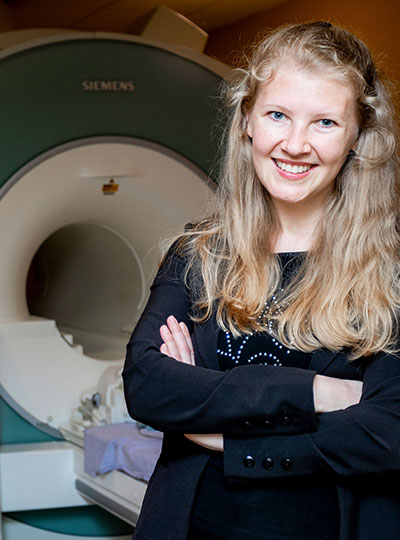
In the June 19, 2024, issue of the journal Nature , McGovern Institute neuroscientist Evelina Fedorenko and colleagues argue that we do not. Language, they say, is primarily a tool for communication.
Fedorenko acknowledges that there is an intuitive link between language and thought. Many people experience an inner voice that seems to narrate their own thoughts. And it’s not unreasonable to expect that well-spoken, articulate individuals are also clear thinkers. But as compelling as these associations can be, they are not evidence that we actually use language to think.
“I think there are a few strands of intuition and confusions that have led people to believe very strongly that language is the medium of thought,” she says.
“But when they are pulled apart thread by thread, they don’t really hold up to empirical scrutiny.”
Separating language and thought
For centuries, language’s potential role in facilitating thinking was nearly impossible to evaluate scientifically. But neuroscientists and cognitive scientists now have tools that enable a more rigorous consideration of the idea. Evidence from both fields, which Fedorenko, MIT cognitive scientist and linguist Edward Gibson, and University of California Berkeley cognitive scientist Steven Piantadosi review in their Nature Perspective, supports the idea that language is a tool for communication, not for thought.
“What we’ve learned by using methods that actually tell us about the engagement of the linguistic processing mechanisms is that those mechanisms are not really engaged when we think,” Fedorenko says. Also, she adds, “you can take those mechanisms away, and it seems that thinking can go on just fine.”
Over the past 20 years, Fedorenko and other neuroscientists have advanced our understanding of what happens in the brain as it generates and understands language. Now, using functional MRI to find parts of the brain that are specifically engaged when someone reads or listens to sentences or passages, they can reliably identify an individual’s language-processing network. Then they can monitor those brain regions while the person performs other tasks, from solving a sudoku puzzle to reasoning about other people’s beliefs.
“Your language system is basically silent when you do all sorts of thinking.” – Ev Fedorenko
“Pretty much everything we’ve tested so far, we don’t see any evidence of the engagement of the language mechanisms,” Fedorenko says. “Your language system is basically silent when you do all sorts of thinking.”
That’s consistent with observations from people who have lost the ability to process language due to an injury or stroke. Severely affected patients can be completely unable to process words, yet this does not interfere with their ability to solve math problems, play chess, or plan for future events. “They can do all the things that they could do before their injury. They just can’t take those mental representations and convert them into a format which would allow them to talk about them with others,” Fedorenko says. “If language gives us the core representations that we use for reasoning, then…destroying the language system should lead to problems in thinking as well, and it really doesn’t.”
Conversely, intellectual impairments do not always associate with language impairment; people with intellectual disability disorders or neuropsychiatric disorders that limit their ability to think and reason do not necessarily have problems with basic linguistic functions. Just as language does not appear to be necessary for thought, Fedorenko and colleagues conclude that it is also not sufficient to produce clear thinking.
Language optimization
In addition to arguing that language is unlikely to be used for thinking, the scientists considered its suitability as a communication tool, drawing on findings from linguistic analyses. Analyses across dozens of diverse languages, both spoken and signed, have found recurring features that make them easy to produce and understand. “It turns out that pretty much any property you look at, you can find evidence that languages are optimized in a way that makes information transfer as efficient as possible,” Fedorenko says.
That’s not a new idea, but it has held up as linguists analyze larger corpora across more diverse sets of languages, which has become possible in recent years as the field has assembled corpora that are annotated for various linguistic features. Such studies find that across languages, sounds and words tend to be pieced together in ways that minimize effort for the language producer without muddling the message. For example, commonly used words tend to be short, while words whose meanings depend on one another tend to cluster close together in sentences. Likewise, linguists have noted features that help languages convey meaning despite potential “signal distortions,” whether due to attention lapses or ambient noise.
“All of these features seem to suggest that the forms of languages are optimized to make communication easier,” Fedorenko says, pointing out that such features would be irrelevant if language was primarily a tool for internal thought.
“Given that languages have all these properties, it’s likely that we use language for communication,” she says. She and her coauthors conclude that as a powerful tool for transmitting knowledge, language reflects the sophistication of human cognition—but does not give rise to it.
Paper: "Language is primarily a tool for communication rather than thought"

A new strategy to cope with emotional stress

Nancy Kanwisher Shares 2024 Kavli Prize in Neuroscience

Using MRI, engineers have found a way to detect light deep in the brain
- Commencement 2024
Languages allow us to express ourselves, create change, and share knowledge with people around the world and across time. Our Harvard experts look at the history, power, and science behind these systems of communication.
Interested in studying language?
Learning language.
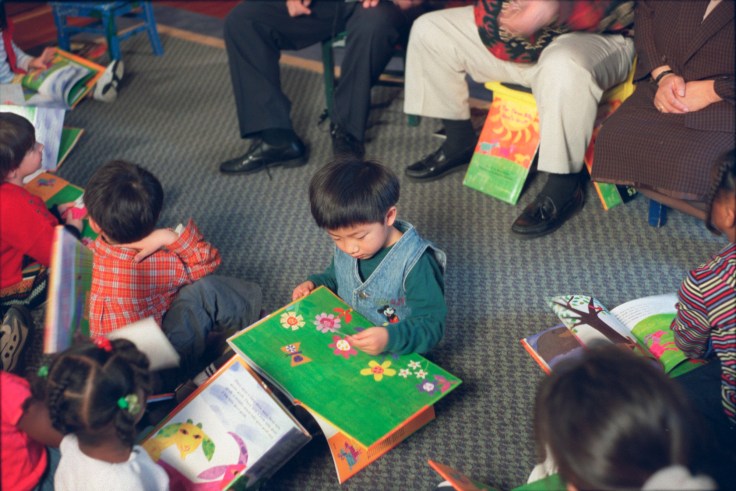
How does the brain learn to read?
Associate Professor of Education Nadine Gaab explains how regions of a child’s brain work together to turn reading into learning.
The brain-changing power of conversation
The interplay between parents and children ignites the brain and boosts its response to language, stimulating lasting literacy skills.
Tracing the roots of language and literacy
Research emphasizes the importance of the first year of life for long-term language and literacy development.
Bringing a hidden language disorder to light
Experts explore how a deficit that affects the learning of one in 12 children can go undetected by parents and educators.
A way with words
Researchers investigate not only how infants acquire language, but how they gain the many complementary skills.
Equity through language
Translating covid information.
Student Pooja Chandrashekar organized a coalition of students to translate COVID-19 information into 30 languages.
Signing quantum
Mandy Houghton helped develop educational modules in American Sign Language for quantum science topics.
Supporting native languages
For his thesis, Zeerak Ahmed developed an Urdu keyboard for smartphones, helping native speakers better communicate.
Using debate to educate
Harvard Law student Matt Summers and Kennedy School student Tessa Holtzman launched Debate Spaces, which brings together middle school students to learn and practice debate skills.
An app for communication
After Extension School graduate Brian Sullivan’s brother-in-law suffered a stroke that significantly impaired his speech, Brian set out to create an iOS app that could help him communicate.
Acquiring language skills
Over her lengthy career, Graduate School of Education Professor Catherine Snow has improved our understanding of how oral language skills are acquired.
Why words matter
When confronting addiction, the power of language is important to keep in mind, specialists say.
Students are acquiring the tools to help change the conversation around weight and health.
What are the best ways to share and respect pronouns , at work and beyond?
Students are working to jump-start conversations on the importance of inclusive language in the sciences as part of the ongoing fight for transgender rights.
Researchers found that when people use predictive text systems —programs that suggest words or phrases—their writing becomes more succinct, more predictable, and less colorful.
In 2020, the Entomological Society of America voted to remove “gypsy moth” and “gypsy ant” from a list of common names used to refer to insects.
Preserving languages
Linguist and Radcliffe Fellow Roberto Zariquiey explores the challenges and joys of studying a language that has very few speakers, and how the conversation around “dying” languages should be reframed.
Learn more about Roberto’s work
Today, there are 100-150 primary speakers of Inupiaq, an Alaska Native language, but Joan Naviyuk Kane has taken up her grandmother’s fight to teach the language.
Explore Joan’s work
An example of a khipu
Incan khipus
Harvard researchers are using advanced pattern identification techniques to decipher khipus, knotted cord devices used for Inca record keeping, which may help decode the ancient language of the Incas.
When Richard Grounds began his work there were fewer than two dozen fluent, first-language speakers of Yuchi, but that’s all changing thanks to his Euchee/Yuchi Language Project.
Américo Mendoza-Mori, director of Harvard’s Latinx Studies Working Group, co-founded The Quechua Alliance, a coalition that hosts annual gatherings to promote Quechua and Andean culture throughout the U.S.
Gullah, or Geechee, was created by enslaved people brought from West Africa to Charleston, S.C., who needed a common language to communicate. It allowed them to speak freely, by way of encoded speech, in the presence of those holding them in bondage.
Many common words or phrases are rooted in the Gullah language: yam (sweet potato), bubba (brother), gumbo (okra), kumbaya (come by here).
Explore Sunn m’Cheaux’s work
Nahuatl was the lingua franca of the Aztecs, who ruled Mexico between the 14th and 16th centuries. It is still spoken by nearly 1.5 million Mexicans and has a growing Harvard study group dedicated to it called Nahuatl Notequixpoyohuan or “My Nahuatl Friends.”
Griko, a language of Greek origins spoken in Salento—part of the “heel” of Italy’s boot—was deemed by the Italian government to be a “language of the backward past” until 1999, when a national law recognized Griko among 12 “historical linguistic minorities” in Italy.
One of the last widely used pictographic languages in the world, the written language of the Dongba, an ethnic minority in southwest China, is being digitized by Harvard-Yenching Library and shared with scholars in China to preserve records of the customs, religious practices, and daily life of the Naxi people.
A Naxi manuscript
Life with multiple languages
Researchers are finding benefits to learning a new language, and ways to support young students who are learning English as a second language.

Planting the seeds of a second language

Bilingualism and dementia

Supporting students as they learn a second language

What language do you dream in?

Understanding second-language learning
Beyond human language.
School of Engineering Ph.D. candidate Cameron Wong talks about the past, present, and future of computer language.
Learn more about the history of computer language
Talking with whales
Fellows from the Radcliffe Institute collaborated with the goal of deciphering the way sperm whales communicate with one another.
Building a language for early computers
The men who invented computers focused primarily on the hardware, but the women who became involved during World War II saw early on the importance of programming.
How to talk to extraterrestrials
Harvard experts lay out the challenges of communicating with beings who may be more intelligent and don’t share our conceptual system.
YOU MAY ALSO LIKE
Related In Focus topics
- Summer Reads
- Performing Arts
Suggestions or feedback?
MIT News | Massachusetts Institute of Technology
- Machine learning
- Social justice
- Black holes
- Classes and programs
Departments
- Aeronautics and Astronautics
- Brain and Cognitive Sciences
- Architecture
- Political Science
- Mechanical Engineering
Centers, Labs, & Programs
- Abdul Latif Jameel Poverty Action Lab (J-PAL)
- Picower Institute for Learning and Memory
- Lincoln Laboratory
- School of Architecture + Planning
- School of Engineering
- School of Humanities, Arts, and Social Sciences
- Sloan School of Management
- School of Science
- MIT Schwarzman College of Computing
Technique improves the reasoning capabilities of large language models
Press contact :, media download.

*Terms of Use:
Images for download on the MIT News office website are made available to non-commercial entities, press and the general public under a Creative Commons Attribution Non-Commercial No Derivatives license . You may not alter the images provided, other than to crop them to size. A credit line must be used when reproducing images; if one is not provided below, credit the images to "MIT."

Previous image Next image
Large language models like those that power ChatGPT have shown impressive performance on tasks like drafting legal briefs, analyzing the sentiment of customer reviews, or translating documents into different languages.
These machine-learning models typically use only natural language to process information and answer queries, which can make it difficult for them to perform tasks that require numerical or symbolic reasoning.
For instance, a large language model might be able to memorize and recite a list of recent U.S. presidents and their birthdays, but that same model could fail if asked the question “Which U.S. presidents elected after 1950 were born on a Wednesday?” (The answer is Jimmy Carter.)
Researchers from MIT and elsewhere have proposed a new technique that enables large language models to solve natural language, math and data analysis, and symbolic reasoning tasks by generating programs.
Their approach, called natural language embedded programs (NLEPs), involves prompting a language model to create and execute a Python program to solve a user’s query, and then output the solution as natural language.
They found that NLEPs enabled large language models to achieve higher accuracy on a wide range of reasoning tasks. The approach is also generalizable, which means one NLEP prompt can be reused for multiple tasks.
NLEPs also improve transparency, since a user could check the program to see exactly how the model reasoned about the query and fix the program if the model gave a wrong answer.
“We want AI to perform complex reasoning in a way that is transparent and trustworthy. There is still a long way to go, but we have shown that combining the capabilities of programming and natural language in large language models is a very good potential first step toward a future where people can fully understand and trust what is going on inside their AI model,” says Hongyin Luo PhD ’22, an MIT postdoc and co-lead author of a paper on NLEPs .
Luo is joined on the paper by co-lead authors Tianhua Zhang, a graduate student at the Chinese University of Hong Kong; and Jiaxin Ge, an undergraduate at Peking University; Yoon Kim, an assistant professor in MIT’s Department of Electrical Engineering and Computer Science and a member of the Computer Science and Artificial Intelligence Laboratory (CSAIL); senior author James Glass, senior research scientist and head of the Spoken Language Systems Group in CSAIL; and others. The research will be presented at the Annual Conference of the North American Chapter of the Association for Computational Linguistics.
Problem-solving with programs
Many popular large language models work by predicting the next word, or token, given some natural language input. While models like GPT-4 can be used to write programs, they embed those programs within natural language, which can lead to errors in the program reasoning or results.
With NLEPs, the MIT researchers took the opposite approach. They prompt the model to generate a step-by-step program entirely in Python code, and then embed the necessary natural language inside the program.
An NLEP is a problem-solving template with four steps. First, the model calls the necessary packages, or functions, it will need to solve the task. Step two involves importing natural language representations of the knowledge the task requires (like a list of U.S. presidents’ birthdays). For step three, the model implements a function that calculates the answer. And for the final step, the model outputs the result as a line of natural language with an automatic data visualization, if needed.
“It is like a digital calculator that always gives you the correct computation result as long as the program is correct,” Luo says.
The user can easily investigate the program and fix any errors in the code directly rather than needing to rerun the entire model to troubleshoot.
The approach also offers greater efficiency than some other methods. If a user has many similar questions, they can generate one core program and then replace certain variables without needing to run the model repeatedly.
To prompt the model to generate an NLEP, the researchers give it an overall instruction to write a Python program, provide two NLEP examples (one with math and one with natural language), and one test question.
“Usually, when people do this kind of few-shot prompting, they still have to design prompts for every task. We found that we can have one prompt for many tasks because it is not a prompt that teaches LLMs to solve one problem, but a prompt that teaches LLMs to solve many problems by writing a program,” says Luo.
“Having language models reason with code unlocks many opportunities for tool use, output validation, more structured understanding into model's capabilities and way of thinking, and more,” says Leonid Karlinsky, principal scientist at the MIT-IBM Watson AI Lab.
“No magic here”
NLEPs achieved greater than 90 percent accuracy when prompting GPT-4 to solve a range of symbolic reasoning tasks, like tracking shuffled objects or playing a game of 24, as well as instruction-following and text classification tasks. The researchers found that NLEPs even exhibited 30 percent greater accuracy than task-specific prompting methods. The method also showed improvements over open-source LLMs.
Along with boosting the accuracy of large language models, NLEPs could also improve data privacy. Since NLEP programs are run locally, sensitive user data do not need to be sent to a company like OpenAI or Google to be processed by a model.
In addition, NLEPs can enable small language models to perform better without the need to retrain a model for a certain task, which can be a costly process.
“There is no magic here. We do not have a more expensive or fancy language model. All we do is use program generation instead of natural language generation, and we can make it perform significantly better,” Luo says.
However, an NLEP relies on the program generation capability of the model, so the technique does not work as well for smaller models which have been trained on limited datasets. In the future, the researchers plan to study methods that could make smaller language models generate more effective NLEPs. In addition, they want to investigate the impact of prompt variations on NLEPs to enhance the robustness of the model’s reasoning processes.
This research was supported, in part, by the Center for Perceptual and Interactive Intelligence of Hong Kong.
Share this news article on:
Related links.
- Hongyin Luo
- Computer Science and Artificial Intelligence Laboratory (CSAIL)
- Department of Electrical Engineering and Computer Science
Related Topics
- Computer science and technology
- Artificial intelligence
- Programming
- Electrical Engineering & Computer Science (eecs)
Related Articles
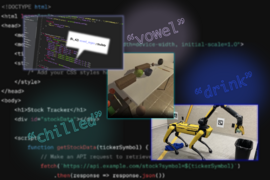
Natural language boosts LLM performance in coding, planning, and robotics

Large language models use a surprisingly simple mechanism to retrieve some stored knowledge

Explained: Generative AI
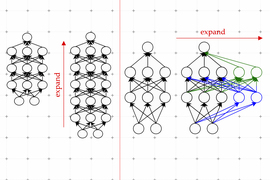
Learning to grow machine-learning models
Previous item Next item
More MIT News
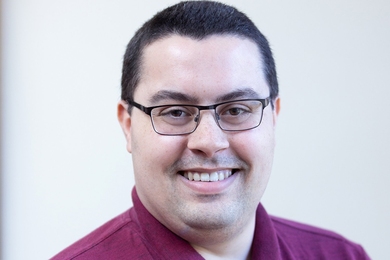
Faces of MIT: Anthony Hallee-Farrell '13
Read full story →
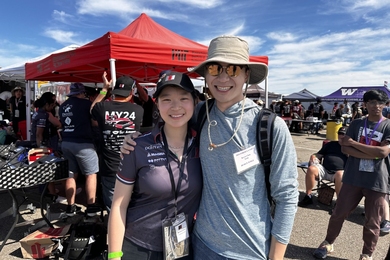
From group stretches to “Hitting Roman,” MIT Motorsports traditions live on
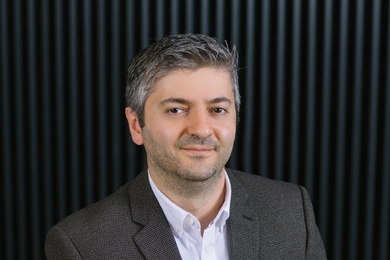
Creating the crossroads
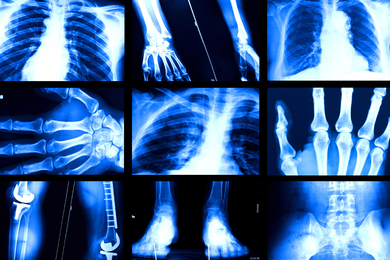
Study reveals why AI models that analyze medical images can be biased

Leaning into the immune system’s complexity

Scientists use computational modeling to guide a difficult chemical synthesis
- More news on MIT News homepage →
Massachusetts Institute of Technology 77 Massachusetts Avenue, Cambridge, MA, USA
- Map (opens in new window)
- Events (opens in new window)
- People (opens in new window)
- Careers (opens in new window)
- Accessibility
- Social Media Hub
- MIT on Facebook
- MIT on YouTube
- MIT on Instagram
Stack Exchange Network
Stack Exchange network consists of 183 Q&A communities including Stack Overflow , the largest, most trusted online community for developers to learn, share their knowledge, and build their careers.
Q&A for work
Connect and share knowledge within a single location that is structured and easy to search.
Can "research work" be treated as a plural noun?
I know "research work s " does not make sense. (I think I heard "works" is only used for art pieces.)
The problem is that I want to use "research work" to indicate multiple research articles. Can I simply assume it's a collective noun and make a sentence like this?
The early research work focus on ...
- singular-vs-plural
- collective-nouns
Early research work focused on....
"The" may or may not be correct dependent on context.
“Works” has a different meaning. It is used to describe construction or engineering projects.
E.g.: There are traffic jams all over the city due to the road works in the centre. Works on the bridge were delayed by 4 weeks due to bad weather. The Works were signed off 6 months after the Completion Date.
So you should never use “works” to describe the work you do when you’re sitting at a desk.
You must log in to answer this question.
Not the answer you're looking for browse other questions tagged singular-vs-plural collective-nouns ..
- Featured on Meta
- Upcoming sign-up experiments related to tags
Hot Network Questions
- How can a landlord receive rent in cash using western union
- What is the original source of this Sigurimi logo?
- Weird behavior by car insurance - is this legit?
- Is there an easy way to batch the change of StyleSheet in 120 Notebooks
- What to do if you disagree with a juror during master's thesis defense?
- Is automorphism on a compact group necessarily homeomorphism? How about N-dimensional torus?
- White grids appears when export GraphicsRow to PDF
- Could space habitats have large transparent roofs?
- Is there an image viewer for ubuntu that will read/apply xmp sidecars?
- Why can't I conserve mass instead of moles and apply ratio in this problem?
- Sets of algebraic integers whose differences are units
- Is it consistent with ZFC that the real line is approachable by sets with no accumulation points?
- Where can I access records of the 1947 Superman copyright trial?
- Is there a way to non-destructively test whether an Ethernet cable is pure copper or copper-clad aluminum (CCA)?
- Are there paintings with Adam and Eve in paradise with the snake with legs?
- What actual purpose do accent characters in ISO-8859-1 and Windows 1252 serve?
- Why was the animal "Wolf" used in the title "The Wolf of Wall Street (2013)"?
- "All due respect to jazz." - Does this mean the speaker likes it or dislikes it?
- Why depreciation is considered a cost to own a car?
- Should I accept an offer of being a teacher assistant without pay?
- Next date in the future such that all 8 digits of MM/DD/YYYY are all different and the product of MM, DD and YY is equal to YYYY
- What stops a plane from rolling when the ailerons are returned to their neutral position?
- How can I confirm for sure that a CVE has been mitigated on a RHEL system?
- In By His Bootstraps (Heinlein) why is Hitler's name Schickelgruber?
- SUGGESTED TOPICS
- The Magazine
- Newsletters
- Managing Yourself
- Managing Teams
- Work-life Balance
- The Big Idea
- Data & Visuals
- Reading Lists
- Case Selections
- HBR Learning
- Topic Feeds
- Account Settings
- Email Preferences
Research: Using AI at Work Makes Us Lonelier and Less Healthy
- David De Cremer
- Joel Koopman

Employees who use AI as a core part of their jobs report feeling more isolated, drinking more, and sleeping less than employees who don’t.
The promise of AI is alluring — optimized productivity, lightning-fast data analysis, and freedom from mundane tasks — and both companies and workers alike are fascinated (and more than a little dumbfounded) by how these tools allow them to do more and better work faster than ever before. Yet in fervor to keep pace with competitors and reap the efficiency gains associated with deploying AI, many organizations have lost sight of their most important asset: the humans whose jobs are being fragmented into tasks that are increasingly becoming automated. Across four studies, employees who use it as a core part of their jobs reported feeling lonelier, drinking more, and suffering from insomnia more than employees who don’t.
Imagine this: Jia, a marketing analyst, arrives at work, logs into her computer, and is greeted by an AI assistant that has already sorted through her emails, prioritized her tasks for the day, and generated first drafts of reports that used to take hours to write. Jia (like everyone who has spent time working with these tools) marvels at how much time she can save by using AI. Inspired by the efficiency-enhancing effects of AI, Jia feels that she can be so much more productive than before. As a result, she gets focused on completing as many tasks as possible in conjunction with her AI assistant.
- David De Cremer is a professor of management and technology at Northeastern University and the Dunton Family Dean of its D’Amore-McKim School of Business. His website is daviddecremer.com .
- JK Joel Koopman is the TJ Barlow Professor of Business Administration at the Mays Business School of Texas A&M University. His research interests include prosocial behavior, organizational justice, motivational processes, and research methodology. He has won multiple awards from Academy of Management’s HR Division (Early Career Achievement Award and David P. Lepak Service Award) along with the 2022 SIOP Distinguished Early Career Contributions award, and currently serves on the Leadership Committee for the HR Division of the Academy of Management .
Partner Center
- Publications
- News and Events
- Education and Outreach
Software Engineering Institute
Cite this post.
AMS Citation
Walsh, M., Ross, D., Worrell, C., and Gomez, A., 2023: Harnessing the Power of Large Language Models For Economic and Social Good: Foundations. Carnegie Mellon University, Software Engineering Institute's Insights (blog), Accessed June 27, 2024, https://doi.org/10.58012/gthz-ag46.
APA Citation
Walsh, M., Ross, D., Worrell, C., & Gomez, A. (2023, September 18). Harnessing the Power of Large Language Models For Economic and Social Good: Foundations. Retrieved June 27, 2024, from https://doi.org/10.58012/gthz-ag46.
Chicago Citation
Walsh, Matthew, Dominic Ross, Clarence Worrell, and Alejandro Gomez. "Harnessing the Power of Large Language Models For Economic and Social Good: Foundations." Carnegie Mellon University, Software Engineering Institute's Insights (blog) . Carnegie Mellon's Software Engineering Institute, September 18, 2023. https://doi.org/10.58012/gthz-ag46.
IEEE Citation
M. Walsh, D. Ross, C. Worrell, and A. Gomez, "Harnessing the Power of Large Language Models For Economic and Social Good: Foundations," Carnegie Mellon University, Software Engineering Institute's Insights (blog) . Carnegie Mellon's Software Engineering Institute, 18-Sep-2023 [Online]. Available: https://doi.org/10.58012/gthz-ag46. [Accessed: 27-Jun-2024].
BibTeX Code
@misc{walsh_2023, author={Walsh, Matthew and Ross, Dominic and Worrell, Clarence and Gomez, Alejandro}, title={Harnessing the Power of Large Language Models For Economic and Social Good: Foundations}, month={Sep}, year={2023}, howpublished={Carnegie Mellon University, Software Engineering Institute's Insights (blog)}, url={https://doi.org/10.58012/gthz-ag46}, note={Accessed: 2024-Jun-27} }
Harnessing the Power of Large Language Models For Economic and Social Good: Foundations

Matthew Walsh , Dominic A. Ross , Clarence Worrell , and Alejandro Gomez
September 18, 2023, published in.
Artificial Intelligence Engineering
In his 2016 book, The Fourth Industrial Revolution , Klaus Schwab , the founder of the World Economic Forum, predicted the advent of the next technological revolution, underpinned by artificial intelligence (AI). He argued that, like its predecessors, the AI revolution would wield global socio-economic repercussions. Schwab’s writing was prescient. In November 2022, OpenAI released ChatGPT, a large language model (LLM) embedded with a conversation agent. The reception was phenomenal, with more than 100 million people accessing it during the first two months. Not only did ChatGPT garner widespread personal use, but hundreds of corporations promptly incorporated it and other LLMs to optimize their processes and to enable new products. In this blog post, adapted from our recent whitepaper , we examine the capabilities and limitations of LLMs. In a future post, we will present four case studies that explore potential applications of LLMs.
Despite the consensus that this technology revolution will have global consequences, experts differ on whether the impact will be positive or negative. On one hand, OpenAI’s stated mission is to create systems that benefit all of humanity. On the other hand, following the release of ChatGPT, more than a thousand researchers and technology leaders signed an open letter calling for a six-month hiatus on the development of such systems out of concern for societal welfare.
As we navigate the fourth industrial revolution, we find ourselves at a juncture where AI, including LLMs, is reshaping sectors. But with new technologies come new challenges and risks . In the case of LLMs, these include disuse—the untapped potential of opportune LLM applications; misuse—dependence on LLMs where their usage may be unwarranted; and abuse—exploitation of LLMs for malicious intent. To harness the advantages of LLMs while mitigating potential harms, it is imperative to address these issues.
This post begins by describing the fundamental principles underlying LLMs. We then delve into a range of practical applications, encompassing data science, training and education, research, and strategic planning. Our objective is to demonstrate high leverage use-cases and identify strategies to curtail misuse, abuse, and disuse, thus paving the way for more informed and effective use of this transformative technology.
The Rise of GPT
At the heart of ChatGPT is a type of LLM called a generative pretrained transformer (GPT) . GPT-4 is the fourth in a series of GPT foundational models tracing back to 2018. Like its predecessor, GPT-4 can accept text inputs, such as questions or requests, and produce written responses. Its competencies reflect the massive corpora of data that it was trained with. GPT-4 exhibits human-level performance on academic and professional benchmarks including the Uniform Bar Exam, LSAT, SAT, GRE, and AP subject tests. Moreover, GPT-4 performs well on computer coding problems, common-sense reasoning, and practical tasks that require synthesizing information from many different sources. GPT-4 outperforms its predecessor in all these areas. Even more significantly, GPT-4 is multimodal, meaning that it can accept both text and image inputs. This capability allows GPT-4 to be applied to entirely new problems.
OpenAI facilitated public access to GPT-4 via a chatbot named ChatGPT Plus, offering no-code options for utilizing GPT-4. They further extended its reach by releasing a GPT-4 plugin, providing low-code options for integrating it into business applications. These moves by OpenAI have significantly lowered the barriers to adopting this transformative technology. Concurrently, the emergence of open-source GPT-4 alternatives such as LLaMA and Alpaca has catalyzed widespread experimentation and prototyping.
What are LLMs?
Although GPT-4 is new, language models are not. The complexity and richness of language is one of the distinguishing traits of human cognition. For this reason, AI researchers have long tried to emulate human language using computers. Indeed, natural language processing (NLP) can be traced to the origins of AI. In the 1950 article “ Computing Machinery and Intelligence, ” Alan Turning included automated generation and understanding of human language as a criterion for AI.
In the years since, NLP has undergone multiple paradigm shifts. Early work on symbolic NLP relied on hand-crafted rules. This reliance gave way to statistical NLP in the 1990s, which used machine learning to infer systems of language much as humans do. Advances in computing hardware and algorithms led to neural NLP in the 2010s. The family of methods used for neural NLP—collectively known as deep learning —are more flexible and expressive than ones used for statistical NLP. Further advances in deep learning, along with the application of these methods to datasets several orders of magnitude larger than what was previously possible, have now allowed pre-trained LLMs to meet the criterion issued by Turing in his seminal work on AI.
Fundamentally, today’s language models share an objective of historic NLP approaches—to predict the next word(s) in a sequence. This allows the model to ‘score’ the probability of different combinations of words making up sentences. In this way, language models can respond to human prompts in syntactically and semantically correct ways.
Consider the sentence, “ A green frog nestled in a tree, blending in with nature’s green tapestry. ” By merging repeated words, it is possible to create a graph of transition probabilities; that is, the probability of each word given the previous one (Figure 1).
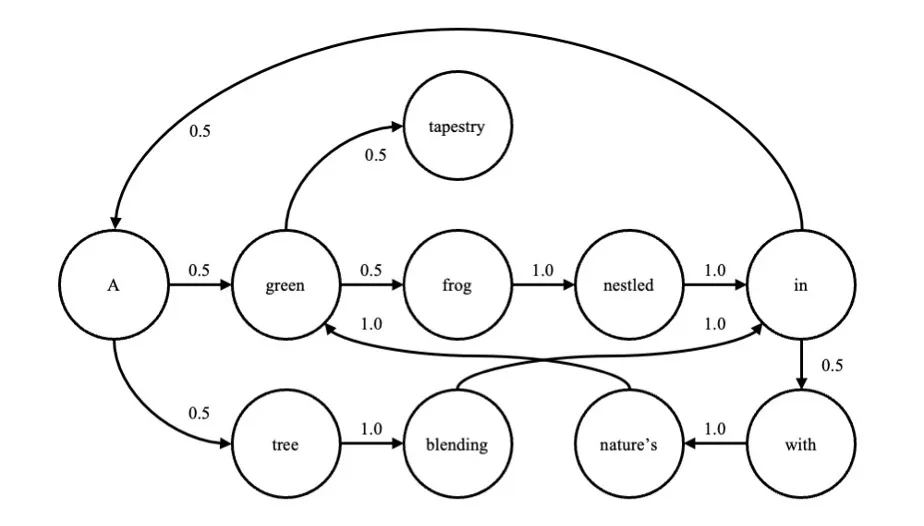
The graph can be expressed as
P(xn|xn-1).
These transition probabilities can be directly approximated from a large corpus of text. Of course, the probability of each word depends on more than just the previous one. A more complete model would calculate the probability given the previous n words. For example, for n = 10, this can be expressed as
P(xn|xn-1, xn-2, xn-3, xn-4, xn-5, xn-6, xn-7, xn-8, xn-9, xn-10).
Herein lies the challenge. As the length of the sequence increases, the transition matrix becomes intractably large. Moreover, only a small fraction of possible combinations of words has occurred or will ever occur.
Neural networks are universal function approximators. Given enough hidden layers and units, a neural network can learn to approximate an arbitrarily complex function, including functions like the one shown above. This property of neural networks has led to their use in LLMs.
Components of an LLM
Figure 2 shows major components of GPT-3, an exemplar LLM embedded in the conversational agent ChatGPT. We discuss each of these components in turn.
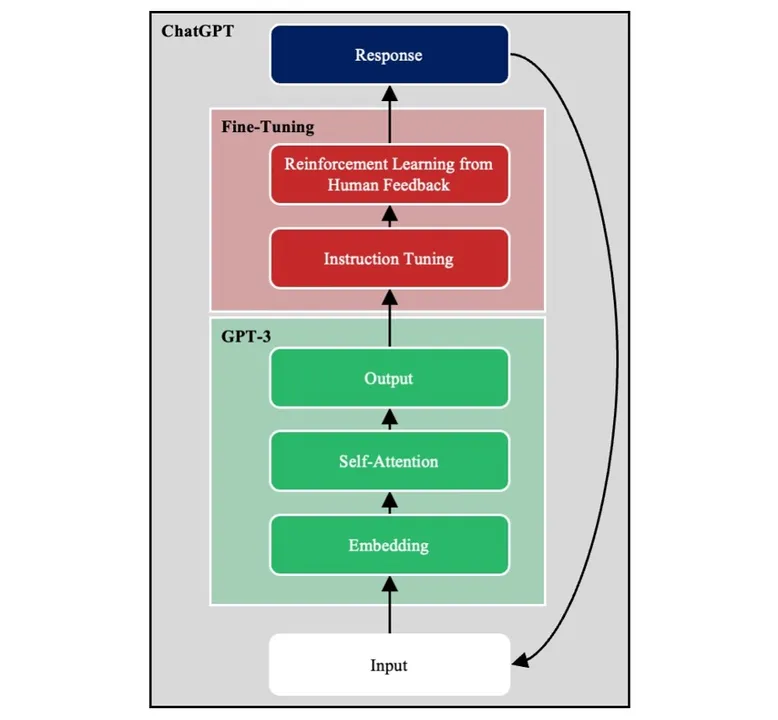
Deep Neural Network
GPT-3 is a deep neural network (DNN). Its input layer takes a passage of text broken down into word-level tokens, and its output layer returns the probabilities of all possible words appearing next. The input is transformed across a series of hidden layers to produce the output.
GPT-3 is trained using self-supervised learning . Passages from the training corpus are given as input with the final word masked, and the model must predict the masked word. Because self-supervised learning does not require labeled outputs, it allows models to be trained on vastly more data than would be possible using supervised learning .
Text Embeddings
The English language alone contains hundreds of thousands of words. GPT-3, like most other NLP models, projects word tokens onto embeddings . An embedding is a high-dimensional numeric vector that represents a word. At first glance, it may seem costly to represent each word as a vector of hundreds of numeric elements. In fact, this process compresses the input from hundreds of thousands of words to the hundreds of dimensions that comprise the embedding space. Embeddings reduce the number of downstream model weights that must be learned. Moreover, they preserve similarities between words. Thus, the words Internet and web are closer to one another in the embedding space than to the word aircraft .
Self-Attention
GPT-3 is a transformer architecture, meaning that it uses self-attention . Consider the two sentences, “ The investor went to the bank ” and “ The bear went to the bank.” The meaning of bank depends on whether the second word is investor or bear . To interpret the final word, the model must relate it to other words contained in the sentence.
Following the introduction of the transformer architecture in 2017 , self-attention has become the preferred way to capture long-range dependencies in language.[1] Self-attention copies the numeric vectors representing each word. Then, using a set of learned attentional weights, it adjusts the values for words based on the surrounding ones (i.e., context). For example, self-attention shifts the numeric representation of bank toward a financial institution in the first sentence, and it shifts it toward a river in the second sentence.
Autoregression
GPT is an autoregressive model (i.e., it is trained to predict the next word in a passage). Other LLMs are trained to predict randomly masked words masked within the body of the passage. The choice between autoregression and masking depends in part on the goal of the LLM.
With one slight adjustment, an autoregressive model can be used for natural language generation. During inference, GPT-3 is run multiple times. At each timestep, the output from the previous timestep is appended to the input, and GPT-3 is run again. In this way, GPT-3 completes its own utterances.
Instruction Tuning
GPT-3 is trained to complete passages. Consequently, when GPT-3 receives the prompt, Write an essay on emerging technologies that will transform manufacturing, GPT-3 may respond, The essay must contain 500 words. This response would be expected if the training set included descriptions of college assignments. The issue is that sentence completion is not obviously aligned with the human intent of question answering.
To overcome this limitation, GPT-3 is augmented with instruction tuning . Specifically, a group of human experts create pairs of prompts and idealized responses. This new training set is used for supervised fine-tuning (SFT). SFT better aligns GPT-3 with human intentions.
Reinforcement Learning from Human Feedback
Following SFT, additional fine-tuning is performed using reinforcement learning from human feedback (RLHF). In short, GPT-3 generates multiple possible responses to a prompt, which human raters rank from best to worst. These data are used to create a reward model that predicts the goodness of model responses. The reward model is then used to train GPT-3 at scale to produce responses better aligned with human intent.
The most direct application of SFT and RLHF is to shift GPT-3 from sentence completion to question answering. However, system designers have other objectives, such as minimizing the use of bias language. By modeling appropriate responses with SFT, and by downvoting inappropriate ones with RLHF, designers can align GPT-3 to other objectives, such as removing bias or bigoted responses.
Engineered and Emergent Abilities of LLMs
A comprehensive evaluation of GPT shows that it frequently produces syntactically and semantically correct responses across a wide range of text and computer programming prompts. Thus, it can encode, retrieve, and apply pre-existing knowledge, and it can communicate that knowledge in syntactically correct ways .
More surprisingly, LLMs like GPT-3 show unanticipated emergent abilities .
- in-context learning —GPT-3 considers the preceding conversation to generate responses that are aligned with the given context. Thus, depending on the preceding conversation, GPT-3 can respond to the same prompt in very different ways, which is called in-context learning because GPT-3 modifies its behavior without requiring changes to its pre-trained weights.
- instruction following —Instruction following is an example of in-context learning. Consider the two prompts, Write a poem; include flour, egg, and sugar and Write a receipt; include flour, eggs, and sugar. Instruction establishes context, which shapes GPT-3’s response. In this way, GPT-3 can perform new tasks without re-training.
- few-shot learning —Few-shot learning is another example of in-context learning. The user provides examples of the types and form of desired outputs. Examples establish context, which again allows GPT-3 to generalize to new tasks without re-training.
Prompt engineering refers to issuing prompts in a certain way to evoke different types of response. It is another example of in-context learning. However, the use of SFT and RLHF in GPT-3 reduces the need for prompt engineering for common tasks, such as question answering.
Looking Ahead
The AI revolution represents an expansive evolution of machine automation, encompassing both routine and non-routine tasks. Parasuraman’s cautionary notes on automation’s misuse and abuse extend their relevance to AI, including LLMs.
Within our discussion, we hinted at the potential for misuse of LLMs. For example, human users may inadvertently accept factually incorrect responses from ChatGPT. Moreover, LLMs can be subject to abuse. For example, adversaries may use them to generate misinformation or to unleash new forms of malware. To address these risks, a comprehensive risk mitigation plan must encompass strategic system design, end-user training, testing and evaluation, as well as robust defense mechanisms. However, although risks can be reduced, they cannot be eliminated.
Parasuraman also cautioned against disuse , or the failure to adopt automation when it would be beneficial to do so. Once again, this warning extends to AI. As the AI revolution unfolds, therefore, we must remain mindful of potential harms, while equally recognizing and embracing the remarkable potential for societal benefits.
In the next post in thie series, we will explore four case studies that present powerful opportunities for LLMs to augment human intelligence.
Additional Resources
Brown, T., Mann, B., Ryder, N., Subbiah, M., Kaplan, J. D., Dhariwal, P., & Amodei, D. (2020). Language models are few-shot learners. Advances in neural information processing systems, 33, 1877-1901.
OpenAI. (2023). GPT-4 Technical report.
Parasuraman, R., & Riley, V. (1997). Humans and automation: Use, misuse, disuse, abuse. Human factors, 39(2), 230-253.
Schwab, K. (2017). The Fourth Industrial Revolution. Crown Publishing, New York, NY
Turing, A. (1950). Computing Machinery and Intelligence. Mind, LI(236), 433–460.
Vaswani, A., Shazeer, N., Parmar, N., Uszkoreit, J., Jones, L., Gomez, A. N., & Polosukhin, I. (2017). Attention is all you need. Advances in neural information processing systems, 30.
The Messy Middle of Large Language Models with Jay Palat and Rachel Dzombak

Matthew Walsh
Digital library publications, send a message.

Dominic A. Ross

Clarence Worrell

Alejandro Gomez
More by the authors, explainability in cybersecurity data science, november 20, 2023 • by jeffrey mellon , clarence worrell, harnessing the power of large language models for economic and social good: 4 case studies, september 25, 2023 • by matthew walsh , dominic a. ross , clarence worrell , alejandro gomez, how to use docker and ns-3 to create realistic network simulations, march 27, 2023 • by alejandro gomez, combining security and velocity in a continuous-integration pipeline for large teams, july 11, 2022 • by alejandro gomez, how easy is it to make and detect a deepfake, march 14, 2022 • by catherine bernaciak , dominic a. ross, more in artificial intelligence engineering, cost-effective ai infrastructure: 5 lessons learned, may 13, 2024 • by william nichols , bryan brown, applying large language models to dod software acquisition: an initial experiment, april 1, 2024 • by douglas schmidt (vanderbilt university) , john e. robert, openai collaboration yields 14 recommendations for evaluating llms for cybersecurity, february 21, 2024 • by jeff gennari , shing-hon lau , samuel j. perl, using chatgpt to analyze your code not so fast, february 12, 2024 • by mark sherman, creating a large language model application using gradio, december 4, 2023 • by tyler brooks, get updates on our latest work..
Sign up to have the latest post sent to your inbox weekly.
Each week, our researchers write about the latest in software engineering, cybersecurity and artificial intelligence. Sign up to get the latest post sent to your inbox the day it's published.
The Role of English Language Skills in Career Growth: A Study of Perceptions and Strategies Used to Improve English Language Skills by Graduate and Undergraduate Students of Karachi, Pakistan
- VI(I):346-355
- CC BY-NC 4.0
- This person is not on ResearchGate, or hasn't claimed this research yet.

- Sindh Madressatul Islam University
Abstract and Figures

Discover the world's research
- 25+ million members
- 160+ million publication pages
- 2.3+ billion citations

- SITI AISYAH ROSLAN

- Helmy Syakh Alam
- Anak Agung Ngurah Redioka

- Evelina M. Tainer
- J LABOR ECON
- Barry R Chiswick
- Sherrie A. Kossoudji
- Paul W. Miller
- Barry R. Chiswick
- REV ECON STAT
- Hoyt Bleakley
- Christian Dustmann

- Michael A. Shields
- Stephen Wheatley Price
- Recruit researchers
- Join for free
- Login Email Tip: Most researchers use their institutional email address as their ResearchGate login Password Forgot password? Keep me logged in Log in or Continue with Google Welcome back! Please log in. Email · Hint Tip: Most researchers use their institutional email address as their ResearchGate login Password Forgot password? Keep me logged in Log in or Continue with Google No account? Sign up
Advertisement
Supported by
New ‘Detective Work’ on Butterfly Declines Reveals a Prime Suspect
Agricultural insecticides were a key factor, according to a study focused on the Midwest, though researchers emphasized the importance of climate change and habitat loss.
- Share full article

By Catrin Einhorn
What’s driving ominous declines in insects?
While a growing body of research shows decreases in many insect populations, it has been hard for scientists to disentangle the possible causes. Are insects suffering from habitat loss as natural areas are plowed and paved? Is climate change doing them in? What about pesticides?
The latest insight comes from a study on butterflies in the Midwest, published on Thursday in the journal PLOS ONE . Its results don’t discount the serious effects of climate change and habitat loss on butterflies and other insects, but they indicate that agricultural insecticides exerted the biggest impact on the size and diversity of butterfly populations in the Midwest during the study period, 1998 to 2014.
Especially detrimental, the researchers found, was a class of widely used insecticides called neonicotinoids that are absorbed into the tissues of plants.
“It’s a story about unintended consequences,” said Scott Swinton, a professor of agricultural economics at Michigan State University and one of the study’s authors. “In developing technologies that were very effective at controlling soybean aphid and certain other agricultural pests, non-target species that we care about, butterflies in particular, have been harmed.”
Europe largely banned neonicotinoids in 2018, citing risks to bees. The new findings come as wildlife officials in the United States weigh whether to place monarch butterflies, which range coast to coast, on the endangered species list. (They have already found such protections to be warranted but said they were precluded by higher-priority needs.)
In addition to delighting humans and pollinating plants, butterfly species are a critical food source for other animals, notably birds, during their life stage as caterpillars. In fact, research has linked some bird declines to insect declines.

Are Butterflies Wildlife? Depends Where You Live.
A legal quirk leaves officials in at least a dozen states with little or no authority to protect insects. That’s a growing problem for humans.
We are having trouble retrieving the article content.
Please enable JavaScript in your browser settings.
Thank you for your patience while we verify access. If you are in Reader mode please exit and log into your Times account, or subscribe for all of The Times.
Thank you for your patience while we verify access.
Already a subscriber? Log in .
Want all of The Times? Subscribe .
Scientist behind Alzheimer’s drug in late-stage trials is indicted on charges of research fraud
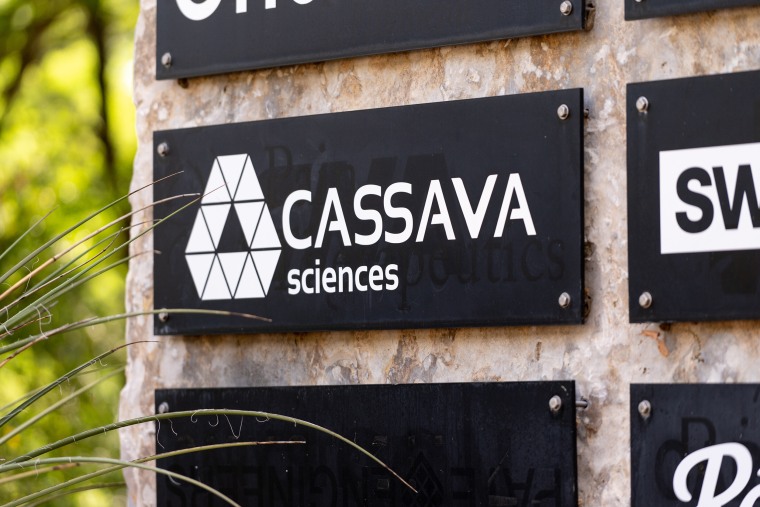
The Summary
- A neuroscientist whose work helped pave the way for an Alzheimer’s drug candidate was indicted on charges of fraud.
- The charges are related to the alleged fabrication of research images and data that the scientist may have used to secure grants.
- The manipulation of research images is a growing concern in the scientific community.
A neuroscientist whose work helped pave the way for an Alzheimer’s drug candidate was indicted by a federal grand jury on Thursday on charges of fraud.
The indictment, announced Friday by the Justice Department , brings additional scrutiny to the work of Hoau-Yan Wang , who has had multiple studies retracted and faced an investigation by the City University of New York, his employer, that was later halted .
The charges in the indictment are related to the alleged fabrication of research images and data that Wang may have used to secure federal grants from the National Institutes of Health.
Wang, a medical professor at the City University of New York , collaborated with Cassava Sciences, a pharmaceutical company based in Austin, Texas, as it investigated an Alzheimer’s drug candidate called simufilam. He was awarded some $16 million in grants for early-stage drug development in collaboration with Cassava, according to the indictment.
The indictment charges Wang with one count of fraud against the United States, two counts of wire fraud and one count of false statements. It accuses Wang of manipulating or adding to images of Western blots, a laboratory method that researchers use to identify proteins, in order to bolster evidence and help secure grants.
The indictment also suggests that Wang may have lied to scientific journals to substantiate his research, which contributed to the early development of simufilam.
The drug is currently in a late-stage clinical trial, and some 735 patients had participated as of May 2024, according to a news release from Cassava last month.
Wang did not immediately respond to a request for comment. In 2023, he told The Wall Street Journal that a CUNY investigation made “no conclusive findings of data manipulation, consistent with what I’ve been saying for two years.”
Cassava said in a release on Friday that Wang had not participated in its most recent trial.
In a news release, the company said: “Wang’s work under these grants was related to the early development phases of the Company’s drug candidate and diagnostic test and how these were intended to work.”
Cassava added that Wang “had no involvement in the Company’s Phase 3 clinical trials of simufilam.”
A Cassava spokesperson also pointed to a news release the company issued September 2023, which said academic researchers outside of CUNY had found evidence that the drug could affect signaling pathways with suspected involvement in Alzheimer’s.
CUNY learned of the indictment on Friday, a spokesperson said in an email, adding: “The University has and will continue to cooperate to the fullest degree with the federal government’s investigation until the matter is resolved.”
The indictment doesn’t specifically name the university, drug or company, listing them instead as “University 1,” “Drug A” and “Company 1,” respectively.
Still, Cassava’s shares fell nearly 35% on Friday in a rapid plunge that triggered multiple trading halts.
Overall, the manipulation of research images and the handling of allegations of research misconduct is a growing concern in the scientific community.
The issue gained particular attention last summer, when then-Stanford President Marc Tessier-Lavigne stepped down from his post after allegations arose that images had been manipulated within his lab. Tessier-Lavigne said he never submitted papers he didn’t think were accurate and noted that a panel investigating his work did not find that he knew of misconduct within his lab.
Then in January, an amateur science sleuth made allegations of research image manipulation by top scientists at the Dana-Farber Cancer Institute , which led to subsequent retractions. Dana-Farber said it took decisive action to correct the scientific record.
Wang’s work has faced questioning for some time, as the journal Science has reported . The journal obtained a report by CUNY that found evidence suggesting research misconduct. The university halted its investigation after Science published the report .
Multiple journal articles on which Wang was an author have been retracted , according to the website Retraction Watch.
Evan Bush is a science reporter for NBC News. He can be reached at [email protected].

IMAGES
VIDEO
COMMENTS
Language can play a big role in how we and others perceive the world, and linguists work to discover what words and phrases can influence us, unknowingly. Image credit: Getty Images Share this card
By translating research papers for review, it allows researchers to provide feedback on work outside their language proficiency, enhancing the diversity and inclusivity of the review process.
Language is estimated to have emerged in humans between 100,000 and 1,000,000 years ago 1. The functions of language and the causal drivers in its origins have long been fiercely debated across ...
lls in the workplaceFull report November 2016In collaboration withEnglish is spoken at some level by 1.75 billion people worldwide - roughly a quarter of the world's population.1 The vast majority of peo. le who use English are non-native speakers (over 1 billion people).Wherever you are in the world, Eng.
research as a process, or series of integrated steps. Understanding this process requires familiarity with several terms, namely constructs, variables,and hypotheses. These basic concepts will be introduced with many concrete examples. They are part of the "language" of research. Understanding the research language is sometimes demanding ...
4. Have a colleague review your manuscript. If you have a colleague whose native language is English or who has had research manuscripts accepted in English journals, ask them to review and edit your manuscript. They will likely have good suggestions, and doing this before you submit to the journal can be very helpful.
A growing body of research reveals that language could result in misunderstanding at work, and influence employees' performance and attitudinal outcomes. Language at work encompasses standard language (e.g., English) as well as several hybrid forms of language (non-native accents, code-switching, and jargon).
This conceptualization provides a useful foundation for research on language teaching and a resource for practitioners working to make language learning the deeper and more enriching human experience it can be. ... Work like this on language learning in different environments illuminates how language learning is embedded in cultural activities ...
Dr. Fedorenko went on to become a cognitive neuroscientist at M.I.T., using brain scanning to investigate how the brain produces language. And after 15 years, her research has led her to a ...
Guides to Research Methods in Language and Linguistics Series Editor: Li Wei, Centre for Applied Linguistics, University College London ... state‐of‐the‐art work from such fields as psychology, computer science, biology, neurosci-ence and cognitive science, sociology, music, philosophy, and anthropology.
Guides to Research Methods in Language and Linguistics Series Editor: Li Wei, Birkbeck College, University of London The science of language encompasses a truly interdisciplinary field of research, with ... His work in language economics and language policy is reflected in numerous publications. He has carried out several large‐scale
Introduction. The purpose of this manual is to introduce the concepts, principles, and procedures of a unique field of linguistic study, that of language acquisition. Our objective is to provide an overview of scientific methods for the study of language acquisition and to present a systematic, scientifically sound approach to this study.
Just as language shapes our thoughts and perceptions of the world, so too does one's culture. For the purpose of the current work, culture can be defined as the learned and shared systems of beliefs, values, preferences, and social norms that are spread by shared activities (Arshad & Chung, 2022; Bezin & Moizeau, 2017).Over the past 50 years, the Journal of Cross-Cultural Psychology (JCCP ...
Qatalog and GitLab uncover the reality of asynchronous work today, the perils of digital presenteeism, and shifting expectations in the modern workplace. We partnered with researchers at Cornell University's Ellis Ideas Lab to understand how software affects how we manage, access, share and create knowledge at work.
About the team. Our team comprises multiple research groups working on a wide range of natural language understanding and generation projects. We pursue long-term research to develop novel capabilities that can address the needs of current and future Google products. We publish frequently and evaluate our methods on established scientific ...
Summary. Using exclusionary language isn't just about offending others; research has made its harmful effects clear. To create a truly inclusive culture, it's critical that you take a hard ...
By Derek Koehl Collaborations with private, non-federal partners through Space Act Agreements are a key component in the work done by NASA's Interagency Implementation and Advanced Concepts Team (IMPACT). A collaboration with International Business Machines (IBM) has produced INDUS, a comprehensive suite of large language models (LLMs) tailored for the domains of Earth science, biological […]
The work of language revitalization is inherently multidisciplinary and very often political, with long-range cultural and social goals that extend beyond the immediate task of generating more speakers. Through illustrative examples and case studies from British Columbia, Hawai'i, and Aotearoa (New Zealand), this contribution demonstrates ...
Step 4: Create a research design. The research design is a practical framework for answering your research questions. It involves making decisions about the type of data you need, the methods you'll use to collect and analyze it, and the location and timescale of your research. There are often many possible paths you can take to answering ...
Language is a defining feature of humanity, and for centuries, philosophers and scientists have contemplated its true purpose. We use language to share information and exchange ideas—but is it more than that? Do we use language not just to communicate, but to think? In the June 19, 2024, issue of the journal Nature, McGovern Institute […]
The brain-changing power of conversation. The interplay between parents and children ignites the brain and boosts its response to language, stimulating lasting literacy skills. Tracing the roots of language and literacy. Research emphasizes the importance of the first year of life for long-term language and literacy development.
The research will be presented at the Annual Conference of the North American Chapter of the Association for Computational Linguistics. Problem-solving with programs. Many popular large language models work by predicting the next word, or token, given some natural language input. While models like GPT-4 can be used to write programs, they embed ...
1. Yes and No. Early research work focused on.... "The" may or may not be correct dependent on context. "Works" has a different meaning. It is used to describe construction or engineering projects. E.g.: There are traffic jams all over the city due to the road works in the centre. Works on the bridge were delayed by 4 weeks due to bad weather.
whole of language education, and not only for second and foreign languages as is the case with the Common European Framework. Lado pleaded for a scientific approach, where by "scientific" he means that language education should be based on scientific studies on the way the brain and the mind work, on the scientific study of languages, and on a
The promise of AI is alluring — optimized productivity, lightning-fast data analysis, and freedom from mundane tasks — and both companies and workers alike are fascinated (and more than a ...
Early work on symbolic NLP relied on hand-crafted rules. This reliance gave way to statistical NLP in the 1990s, which used machine learning to infer systems of language much as humans do. Advances in computing hardware and algorithms led to neural NLP in the 2010s.
Built on the foundation of Code Llama, LLM Compiler enhances the understanding of compiler intermediate representations (IRs), assembly language, and optimization techniques. The model has been trained on a vast corpus of 546 billion tokens of LLVM-IR and assembly code and has undergone instruction fine-tuning to interpret compiler behavior.
The English language has a major impact on our companies and workplaces. Regardless of geographical, social, political, or religious divisions, English has become the lingua franca of the ...
Earlier research by Dr. Forister found that climate change has played an outsized role in butterfly declines in the American West. The authors of the new study were careful to point out that they ...
The charges are related to alleged fabrication of research images and data that Hoau-Yan Wang may have used to secure federal grants from the National Institutes of Health. IE 11 is not supported.